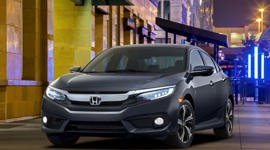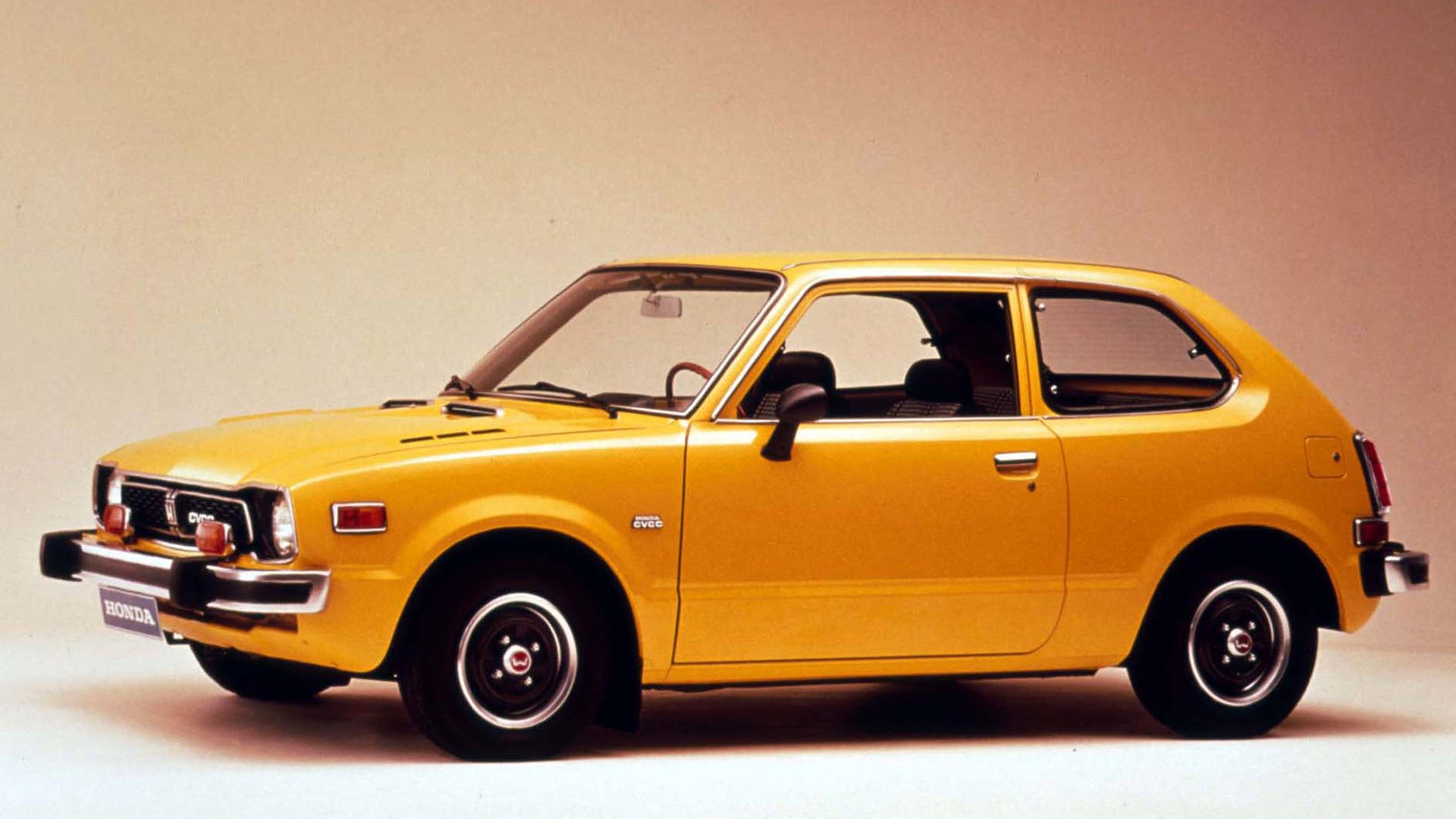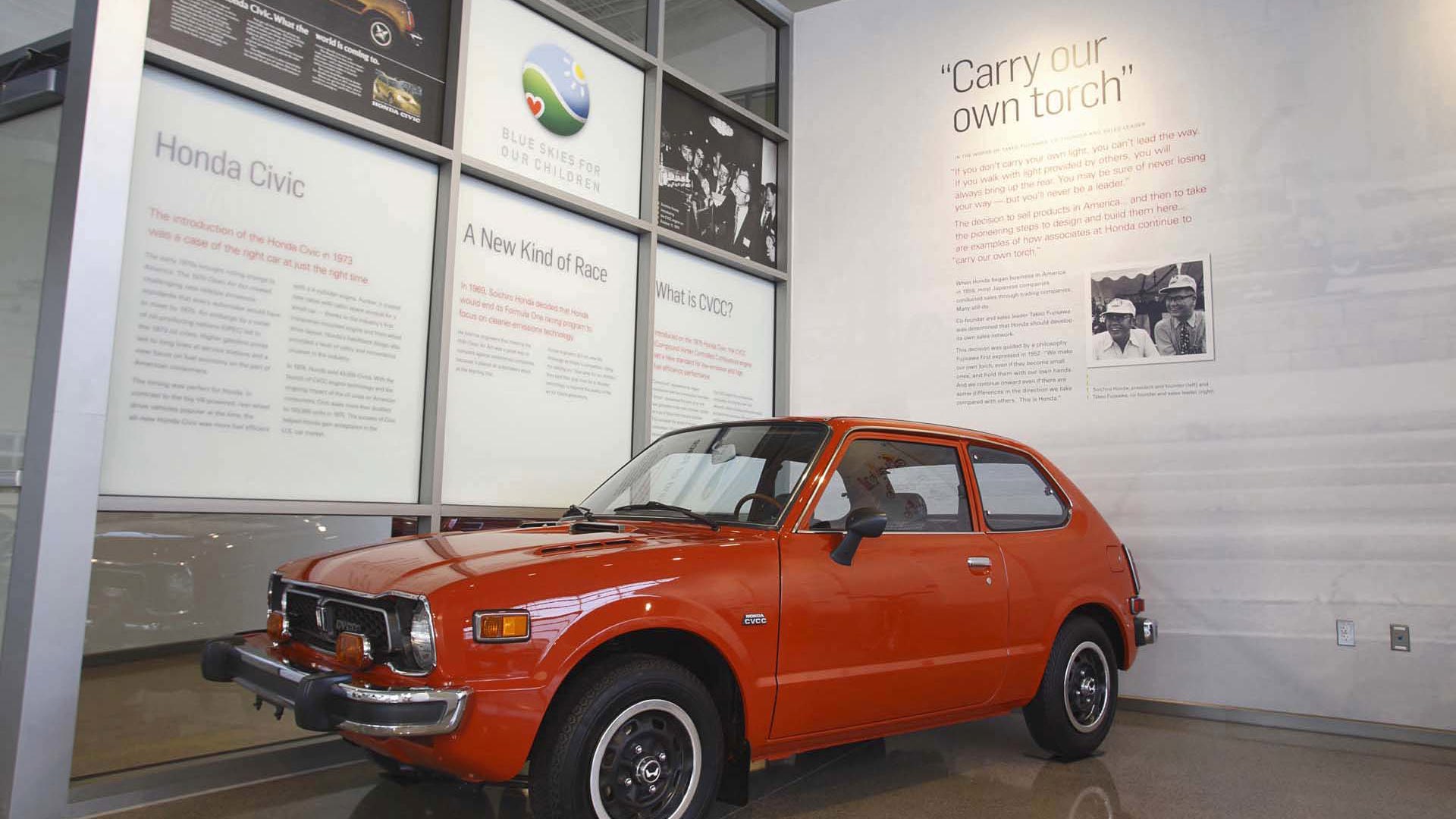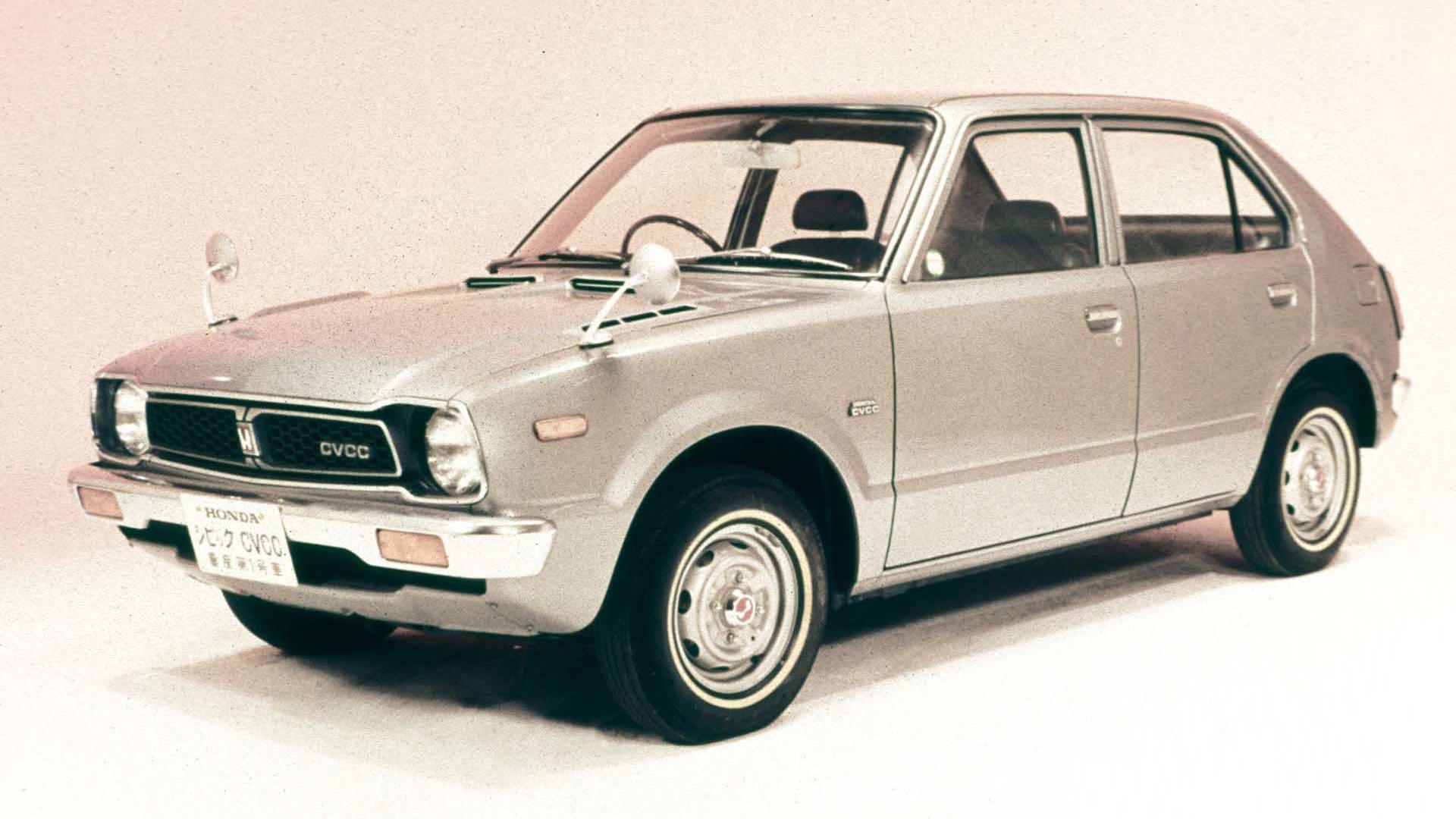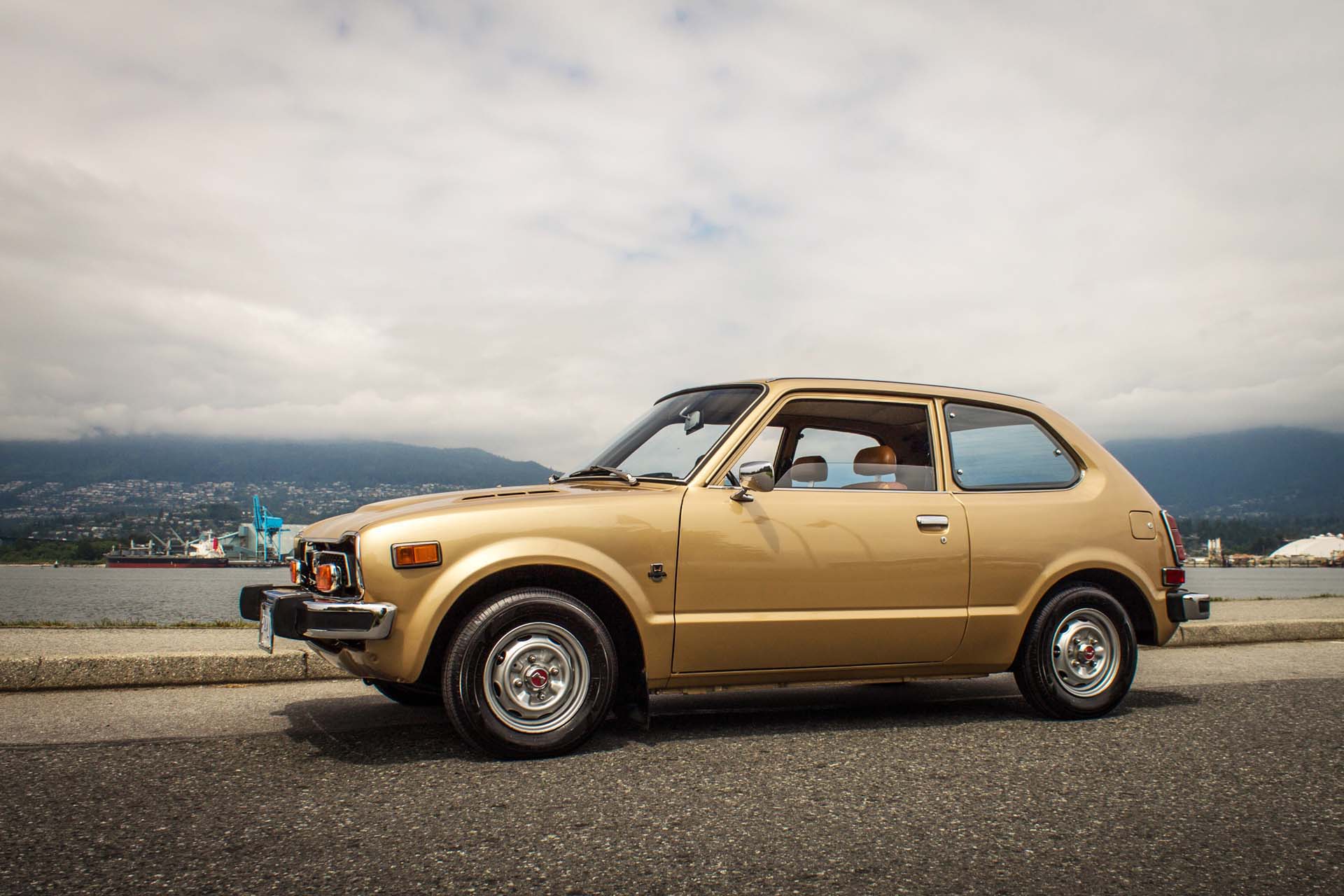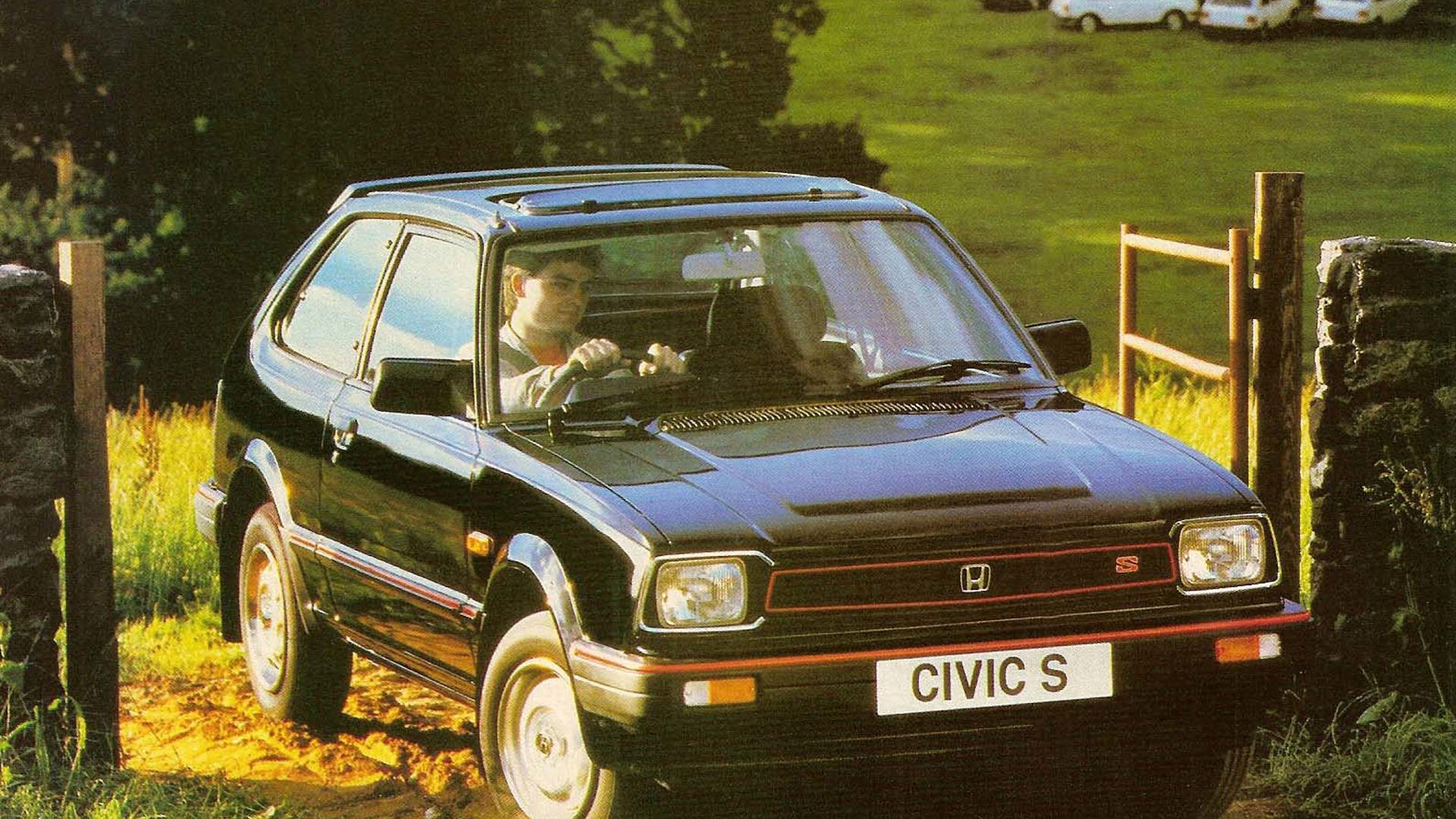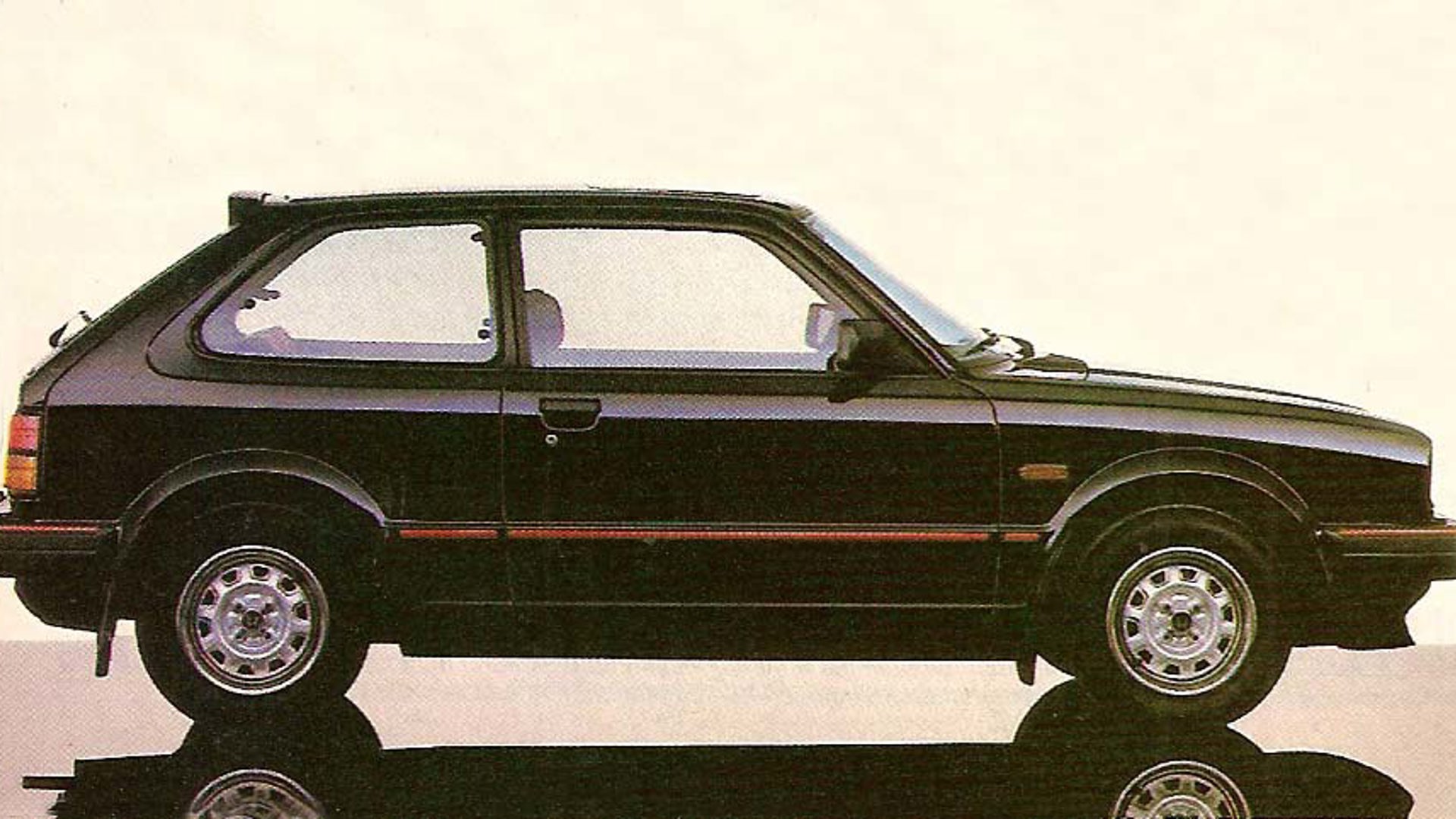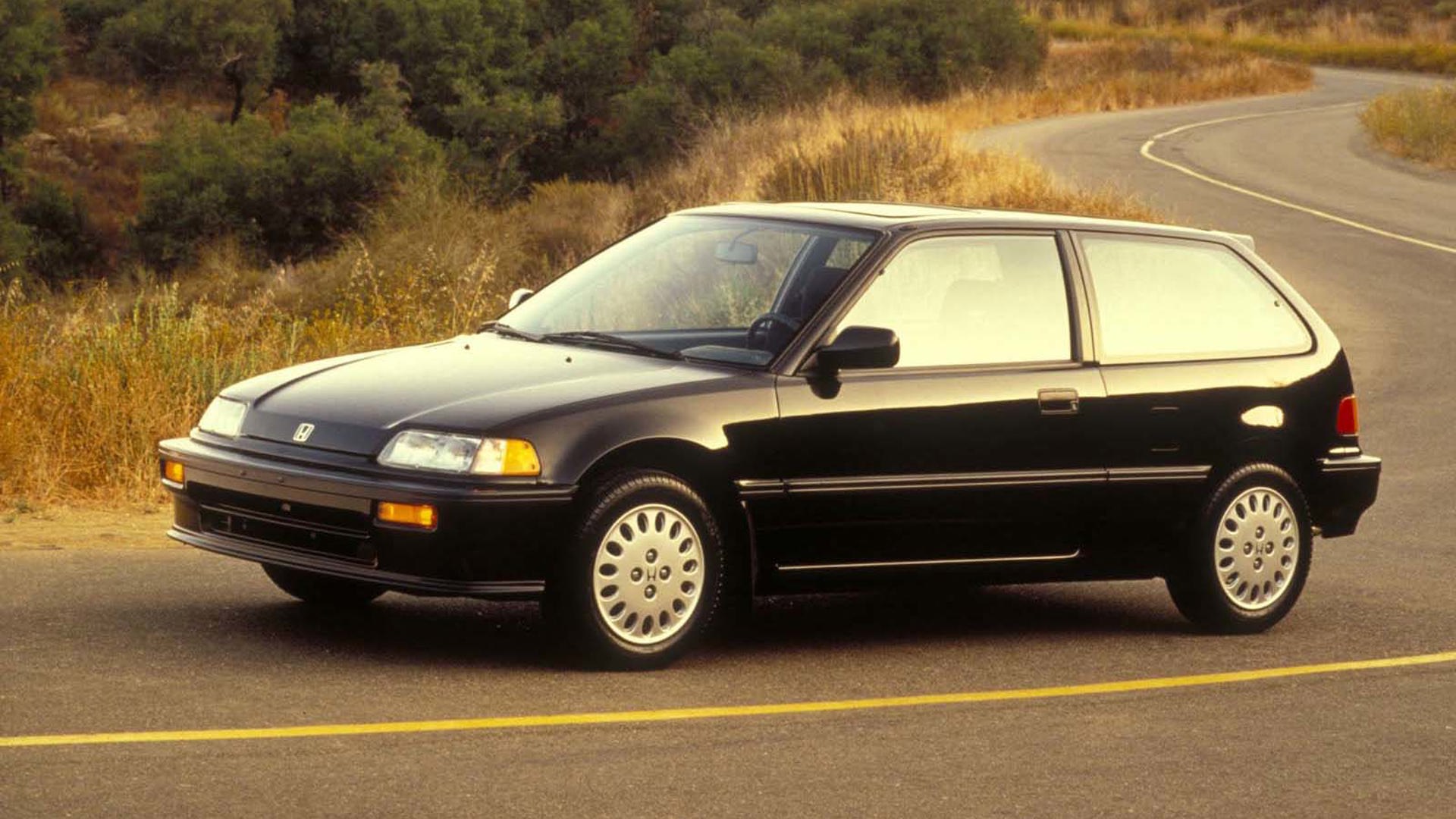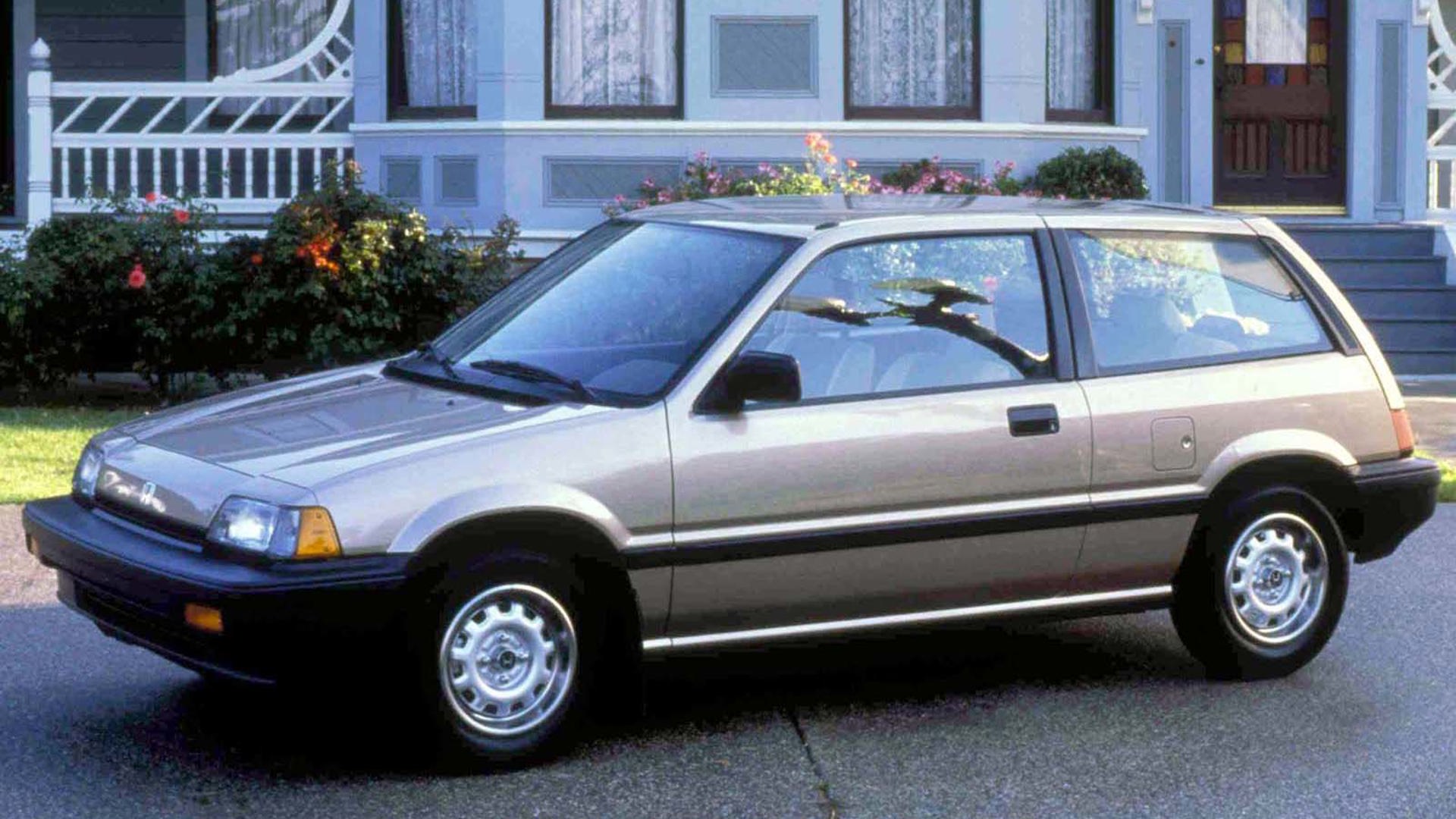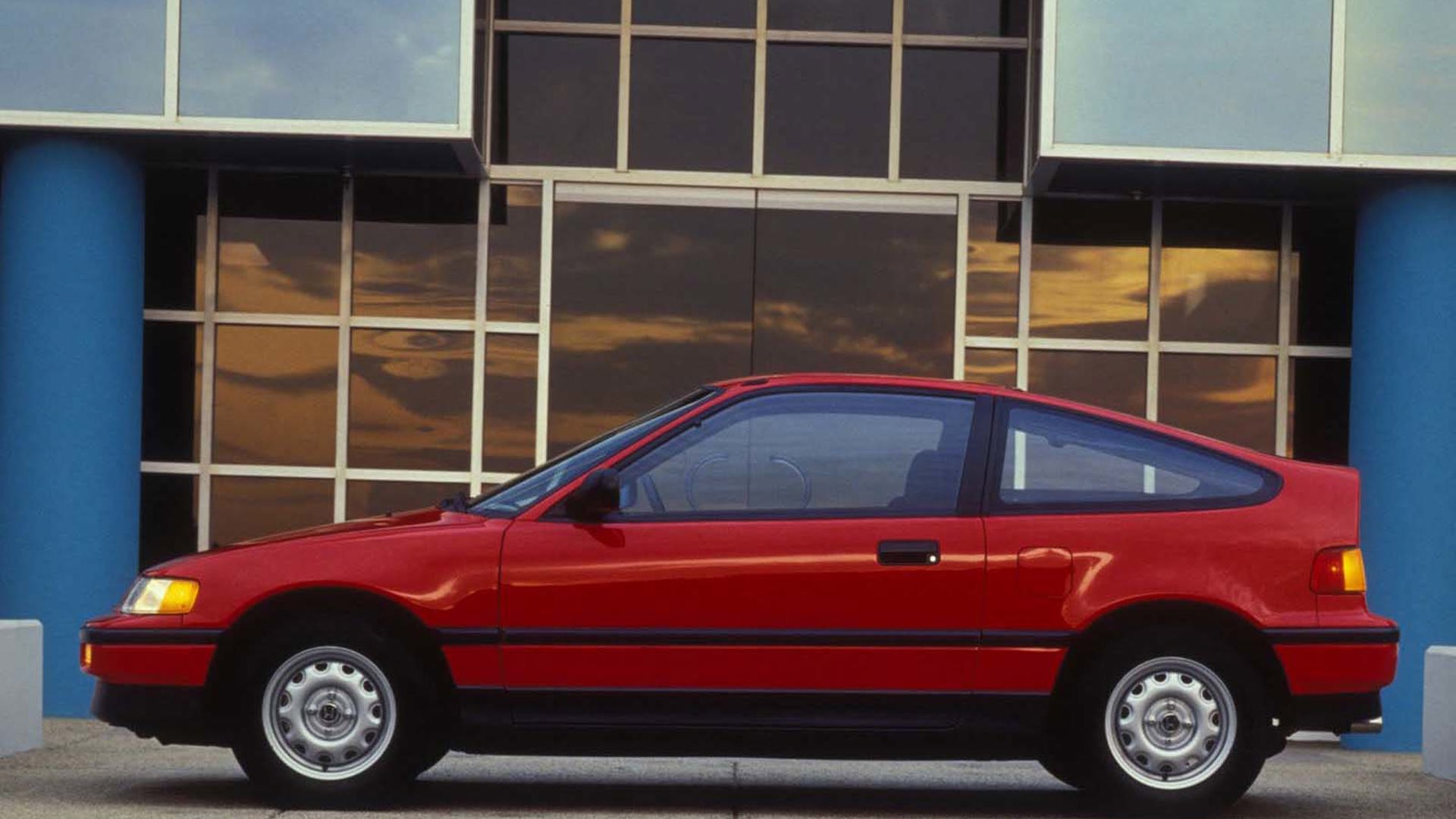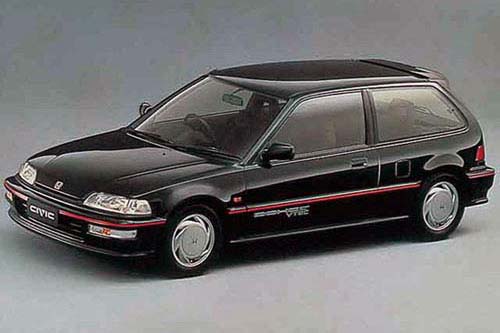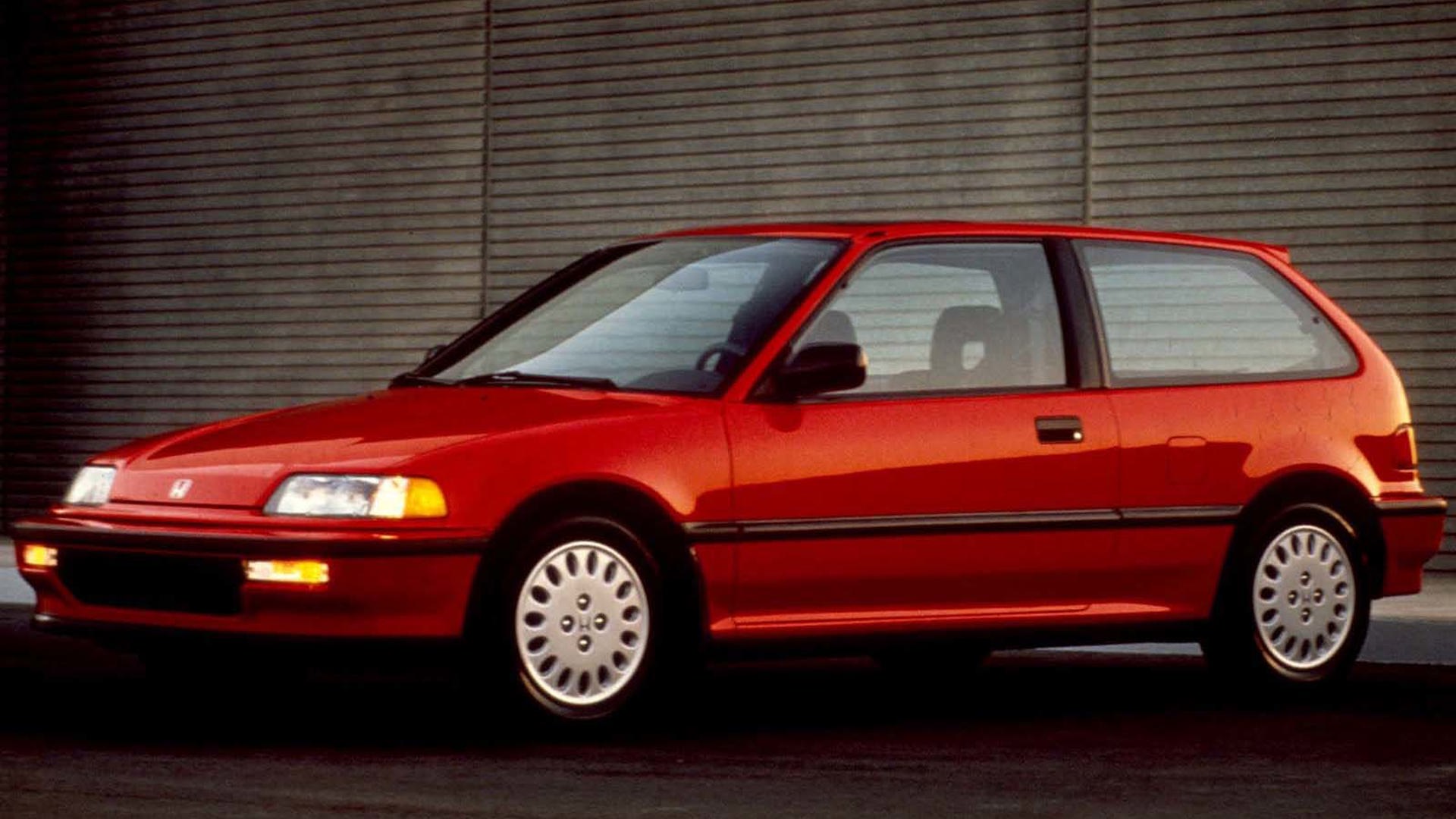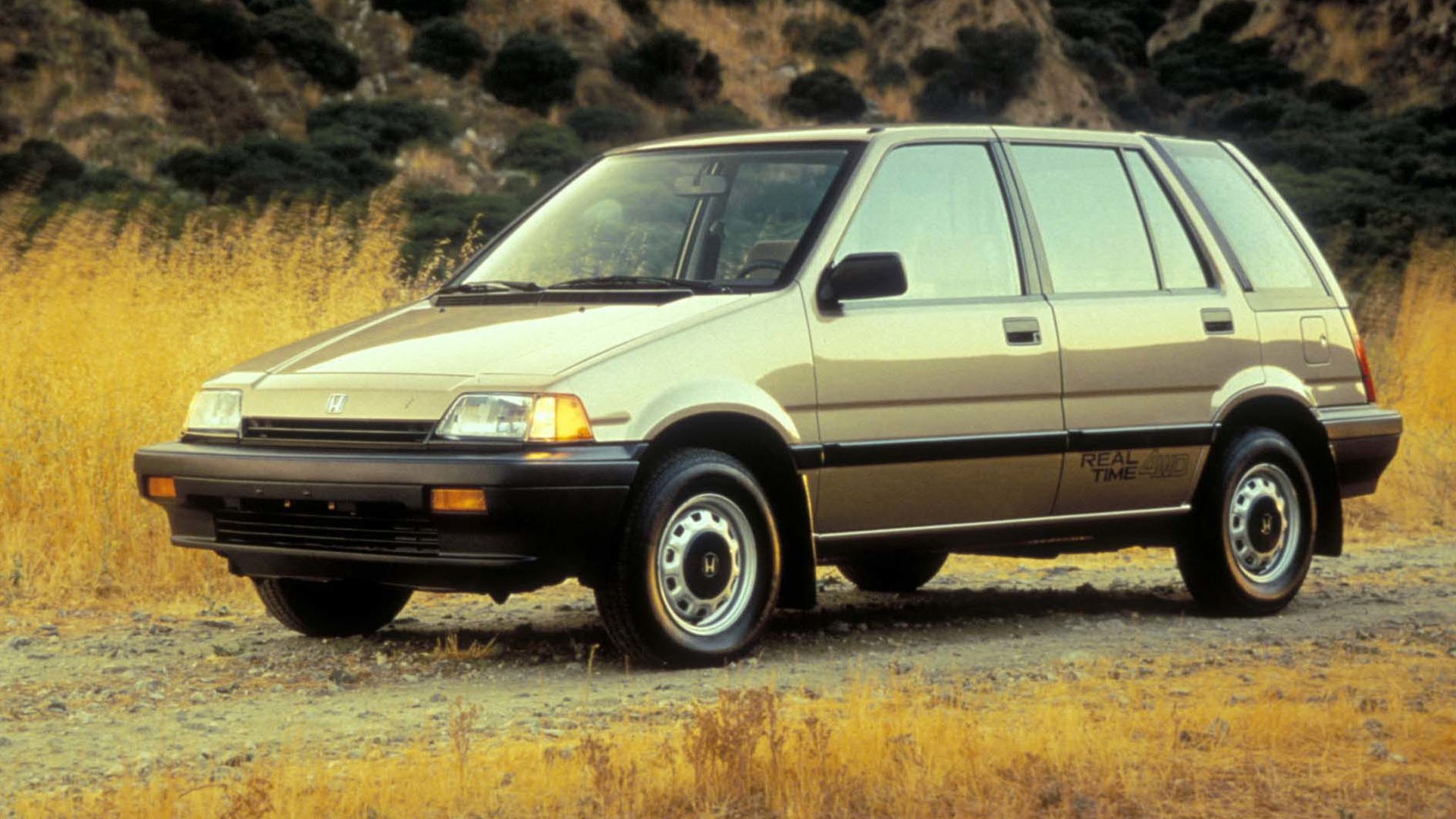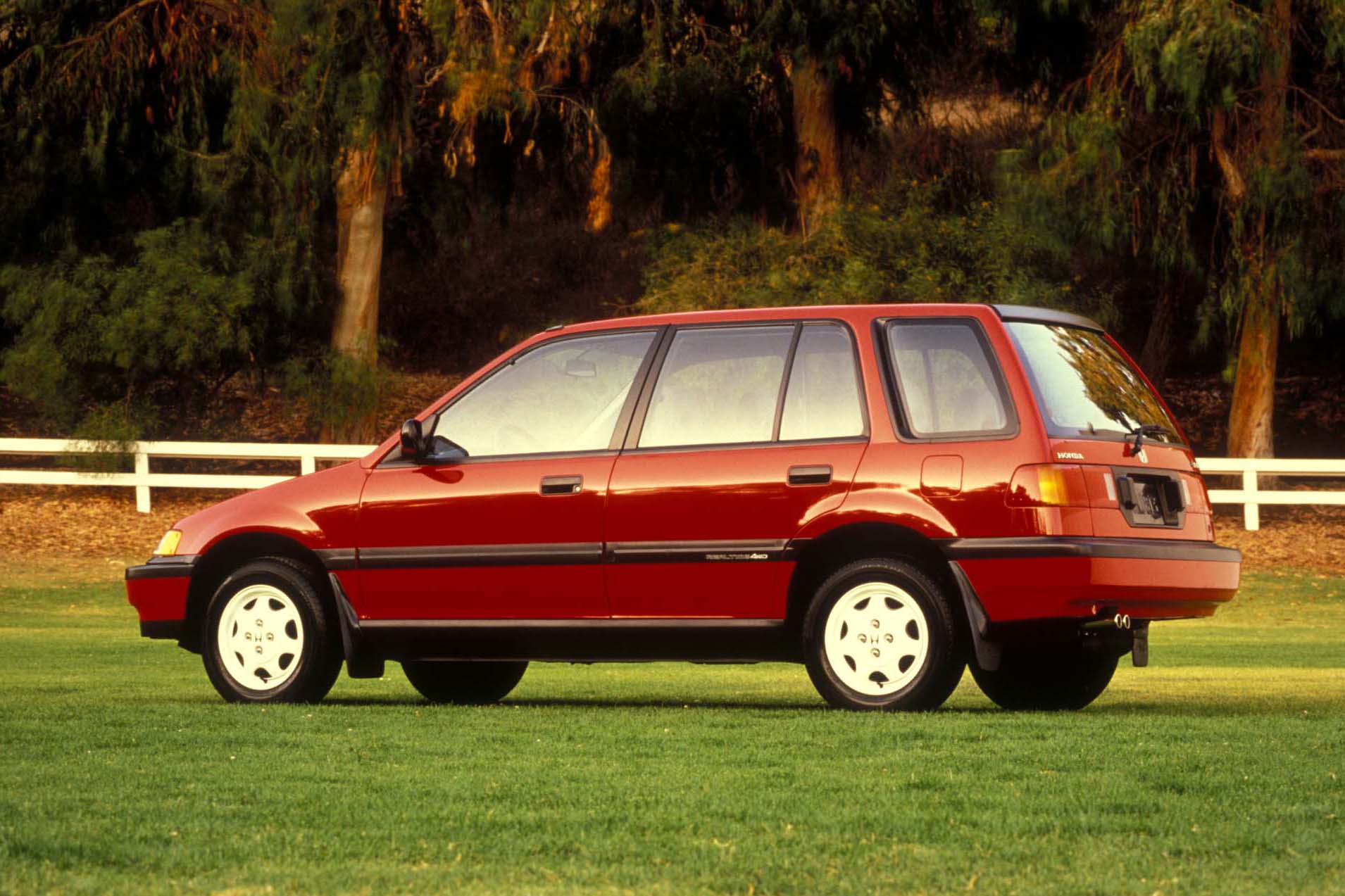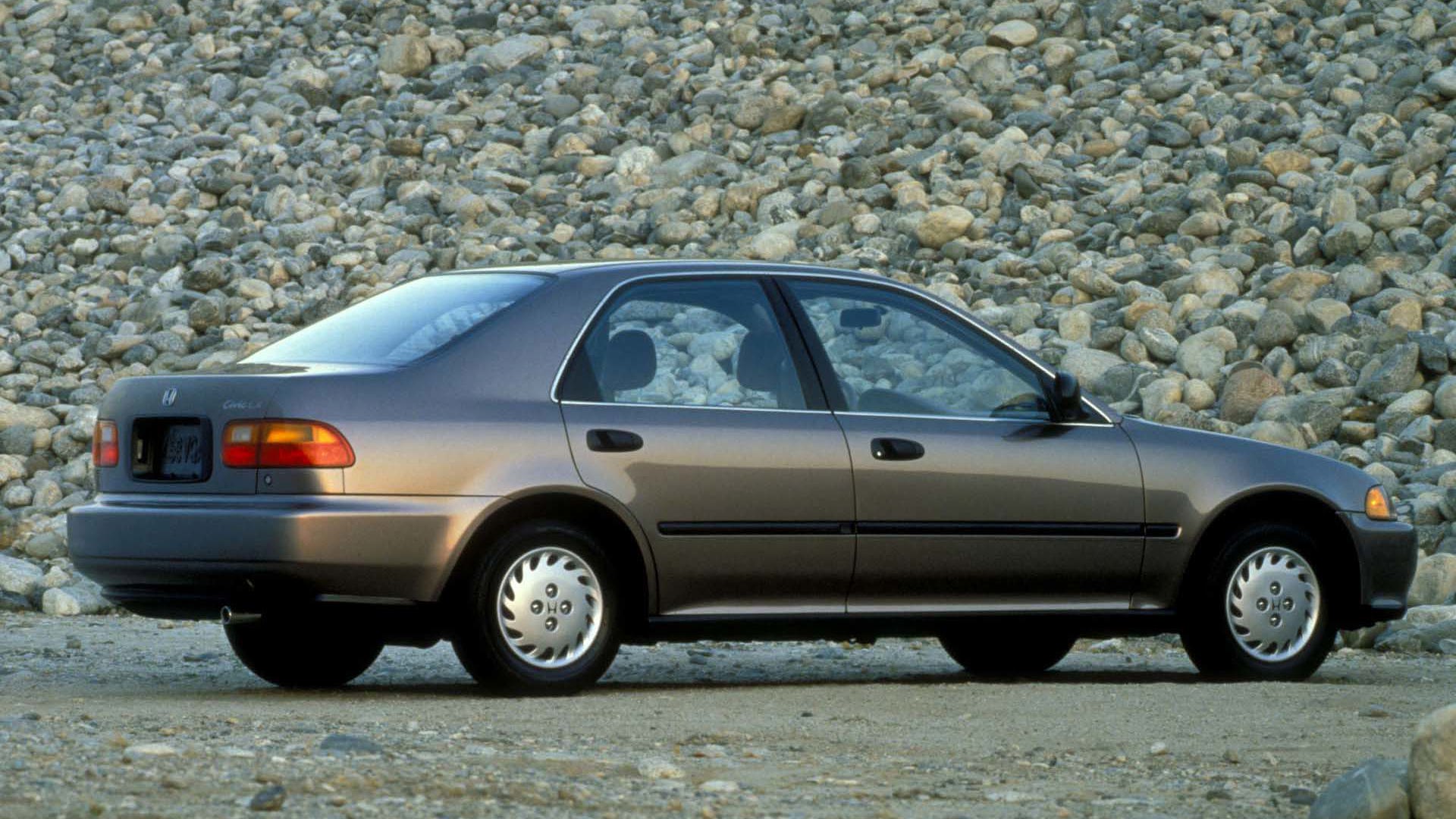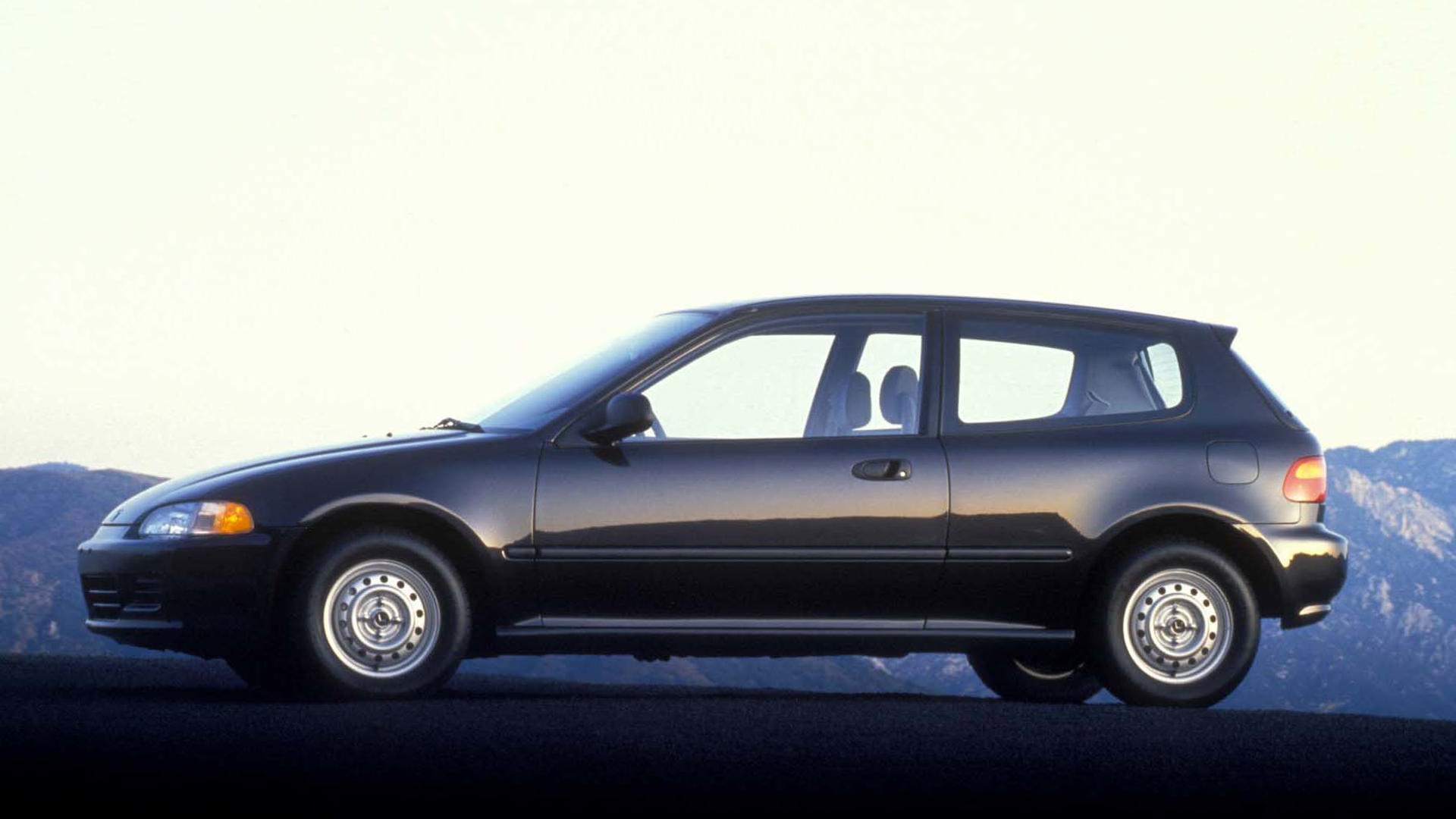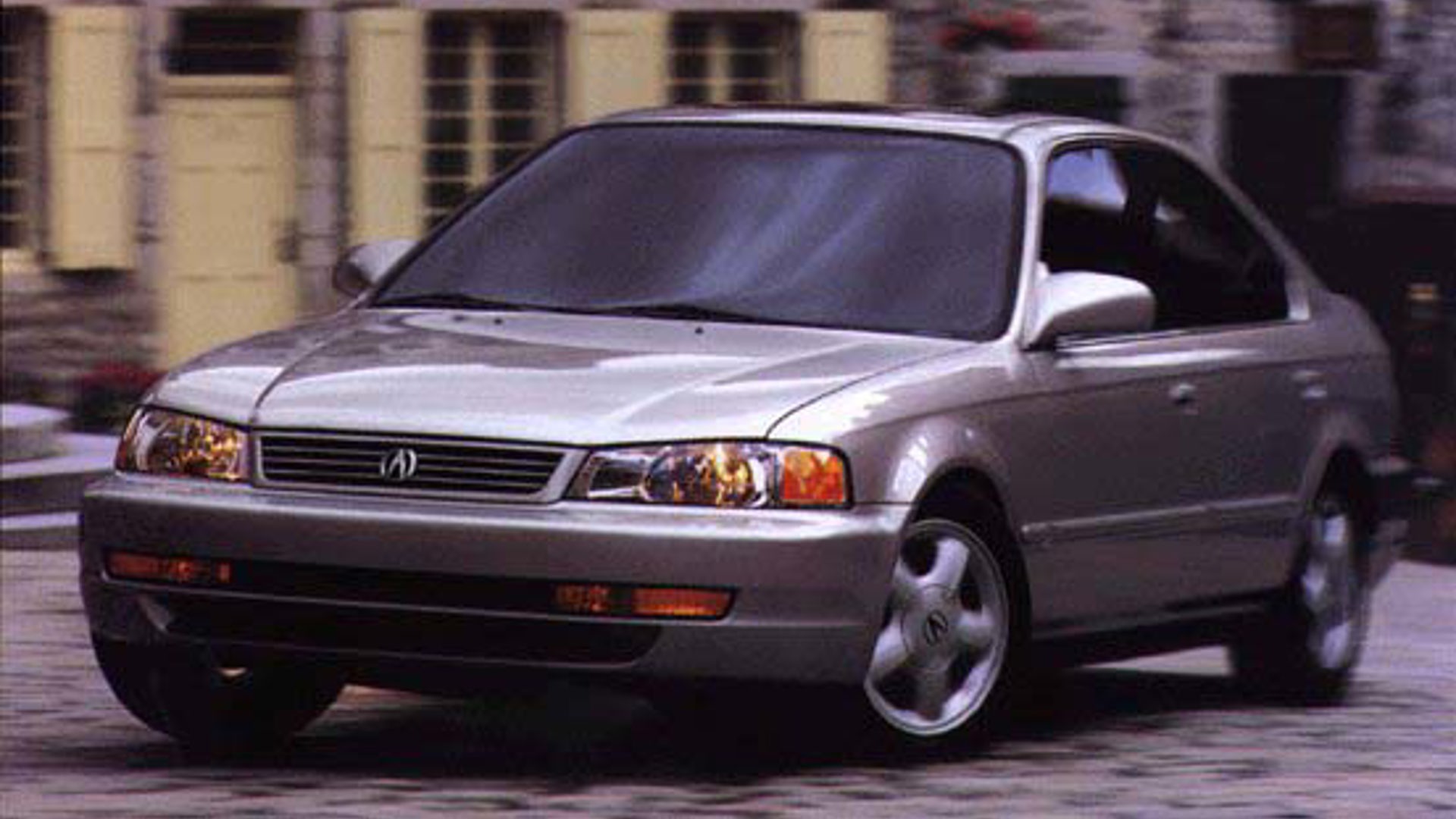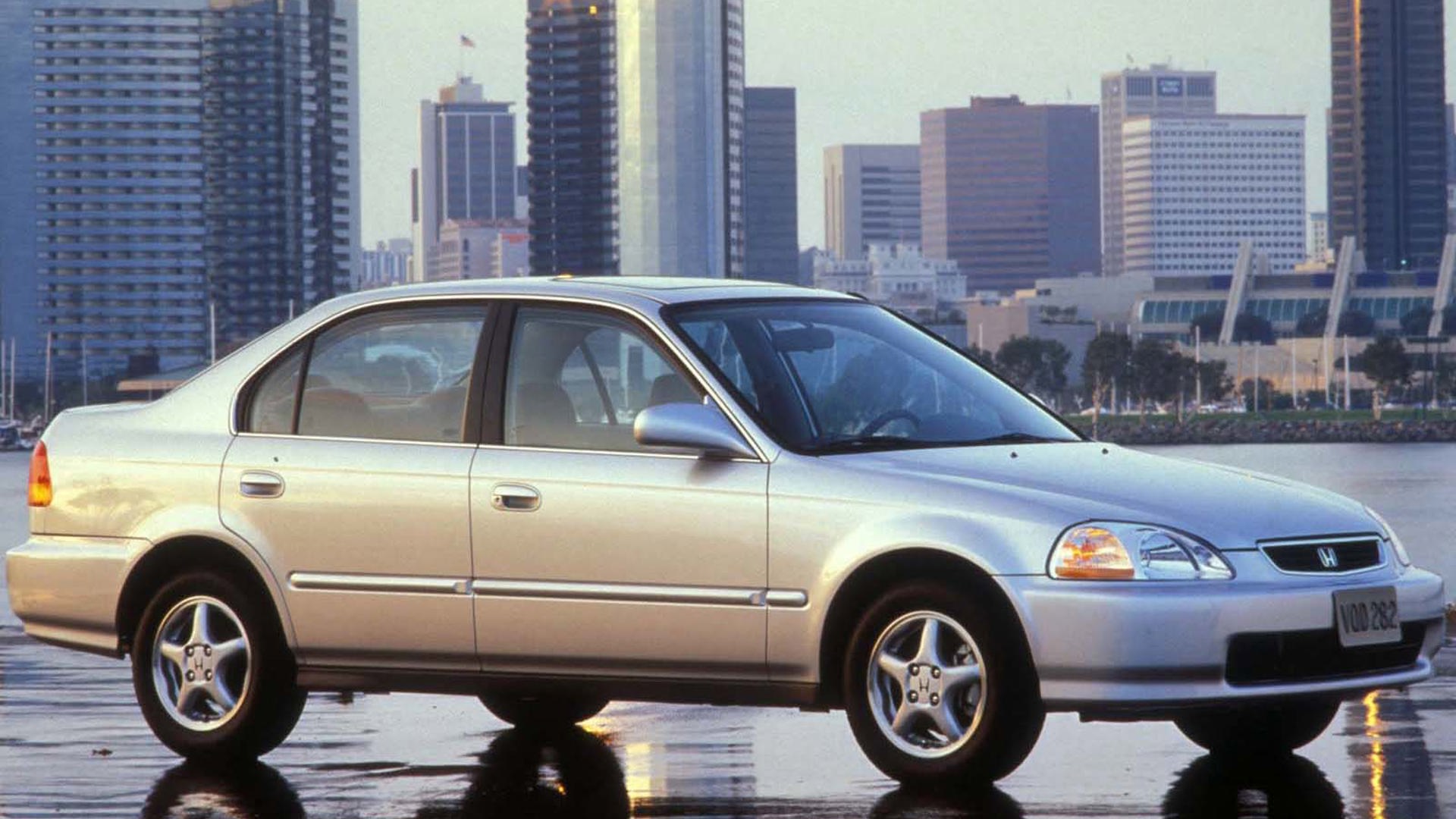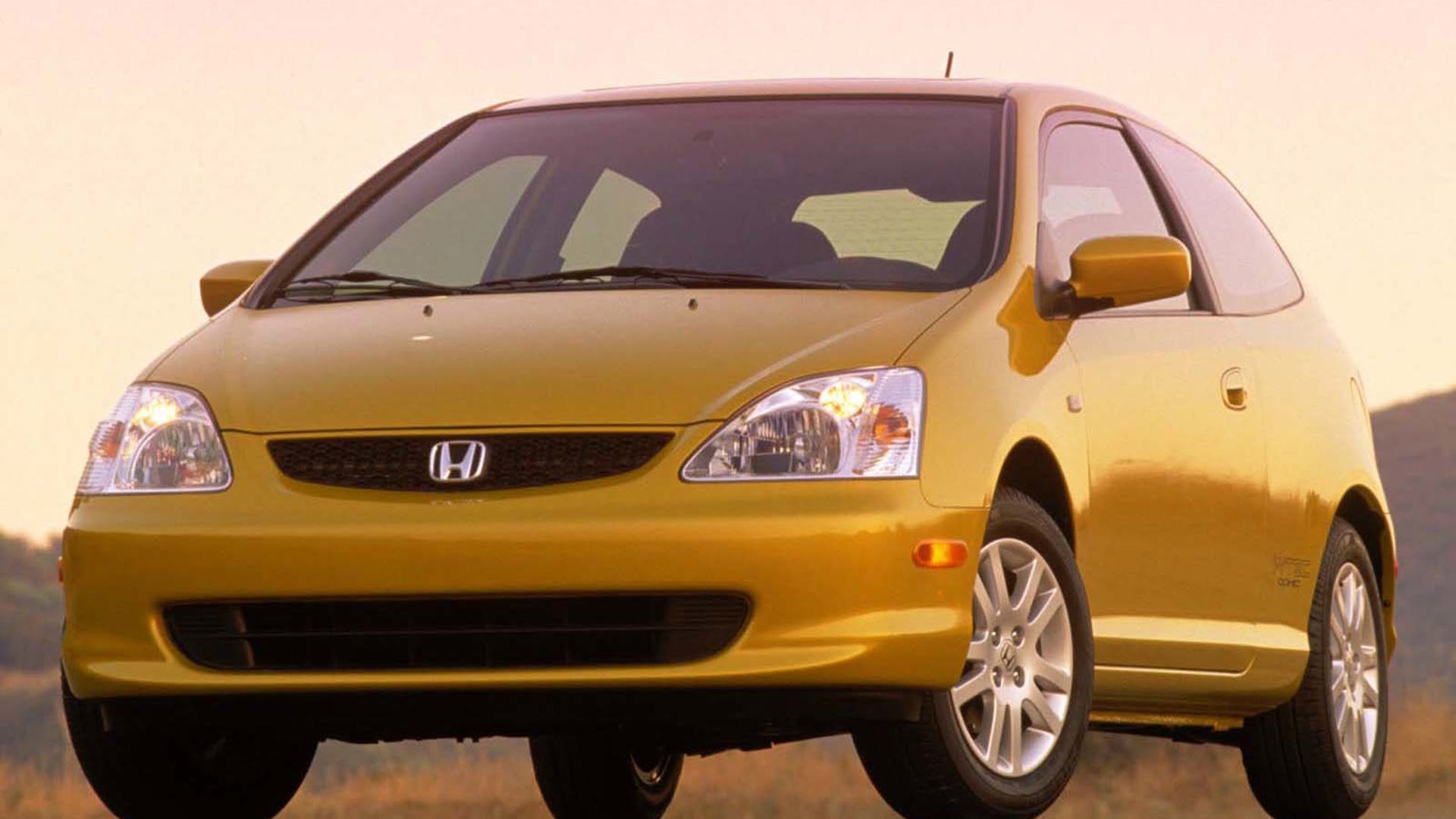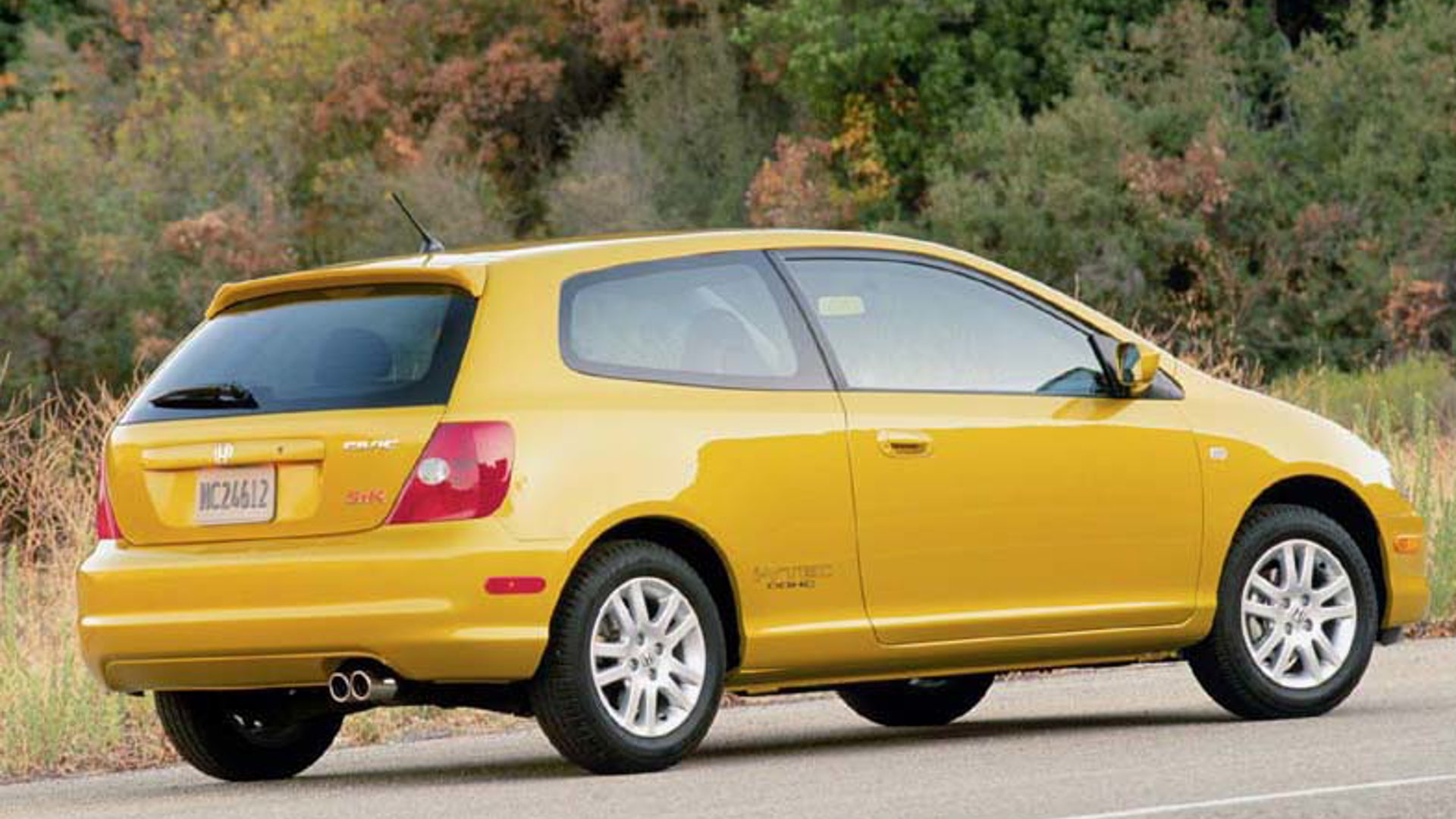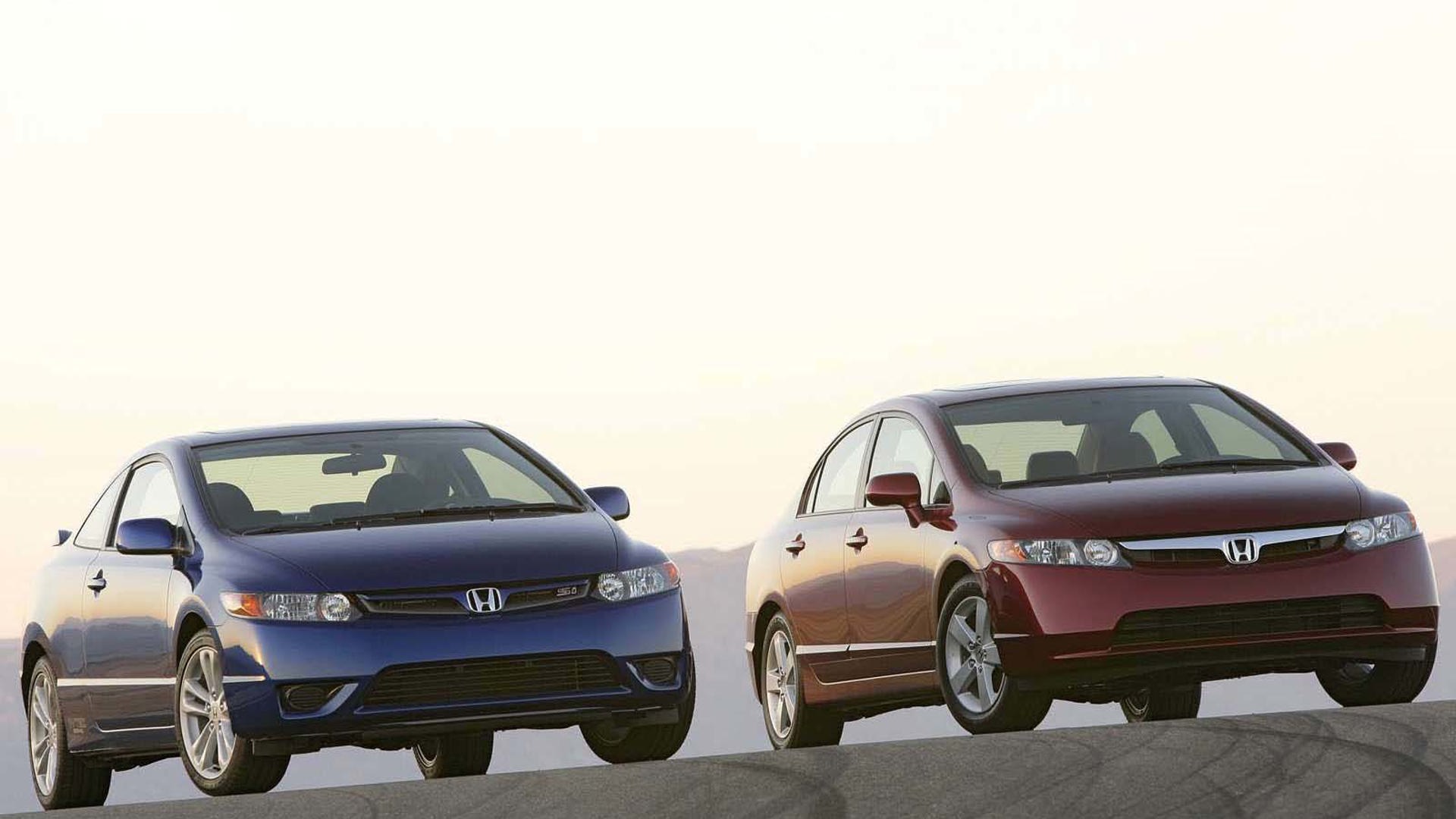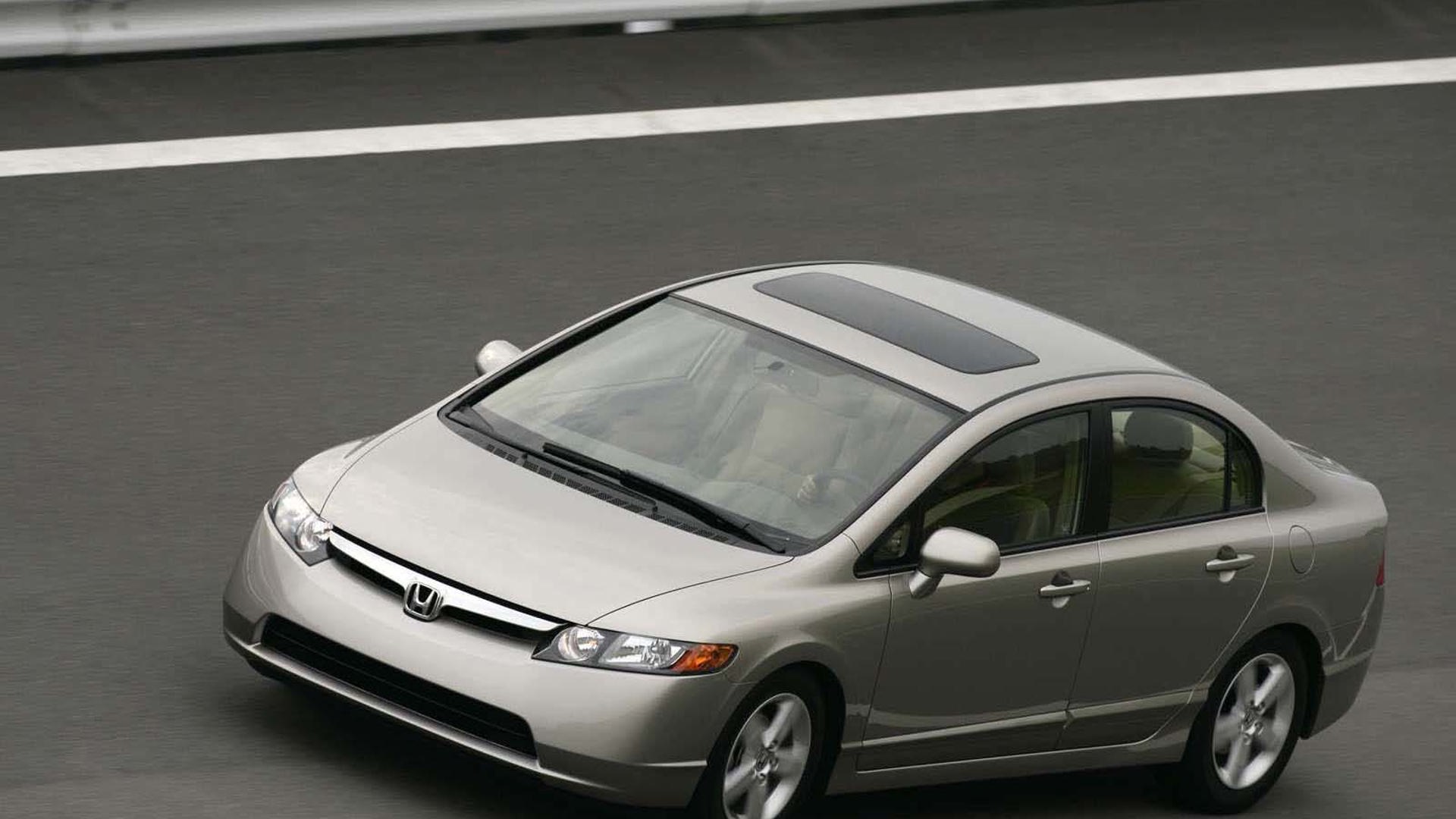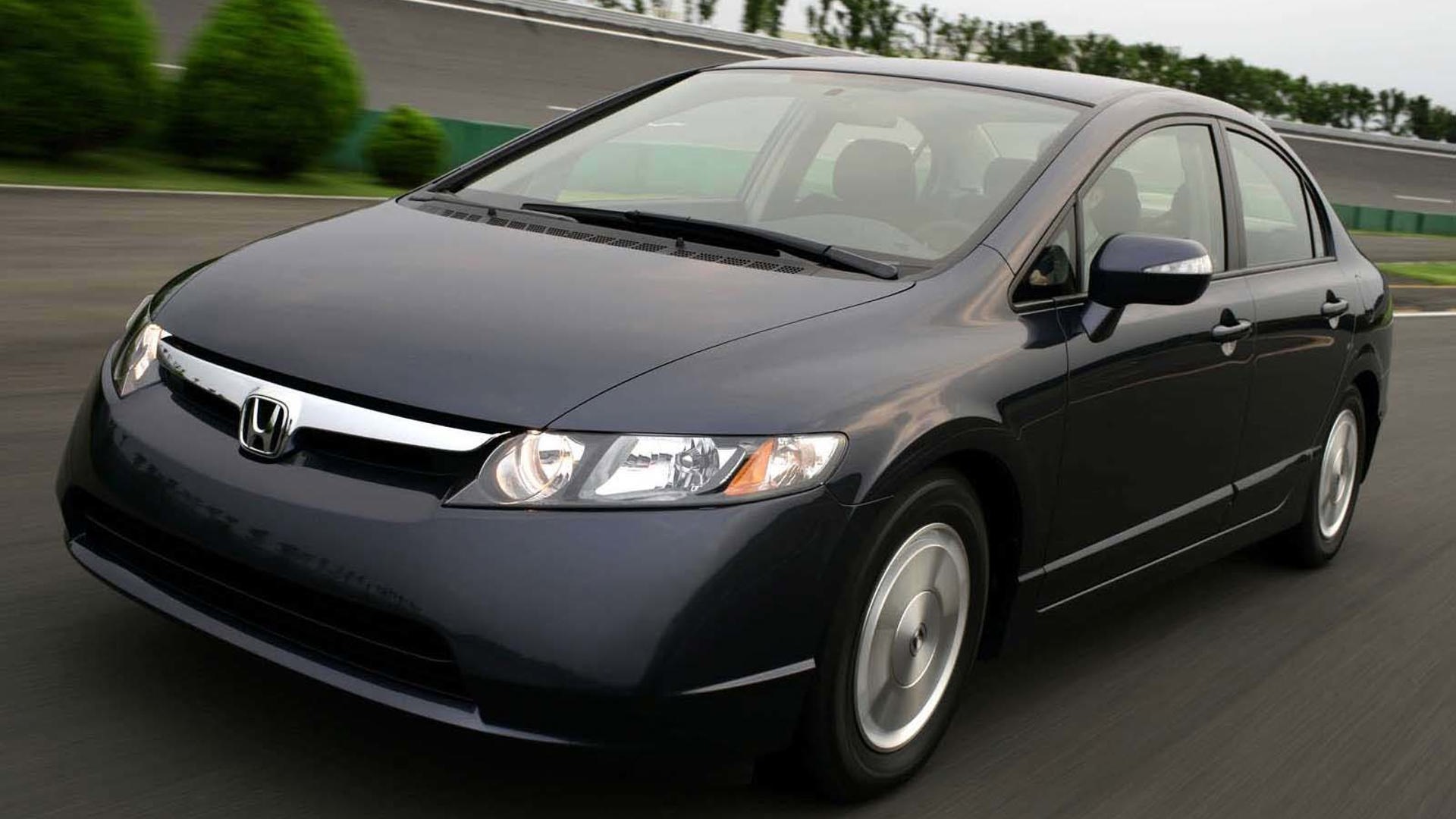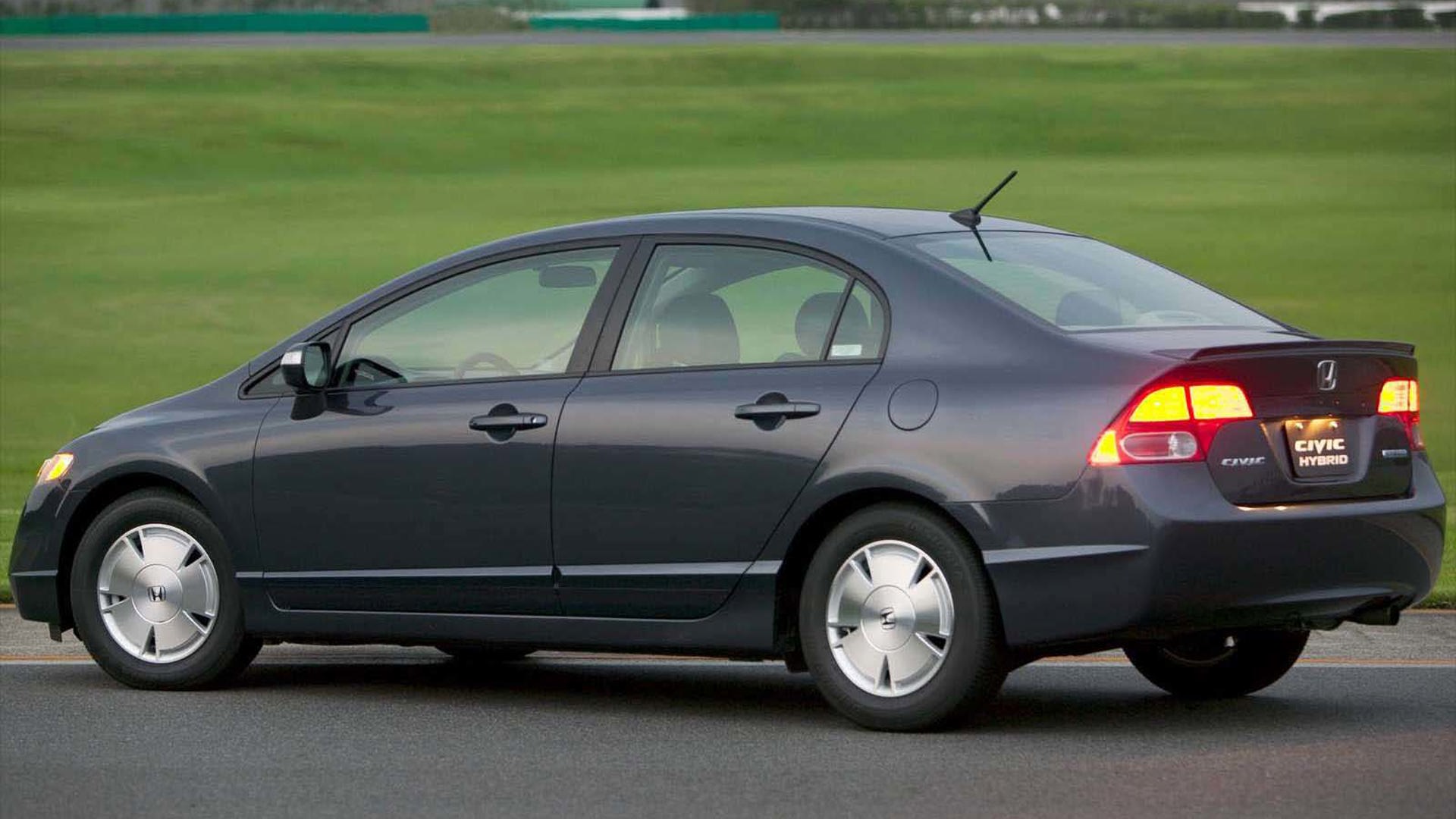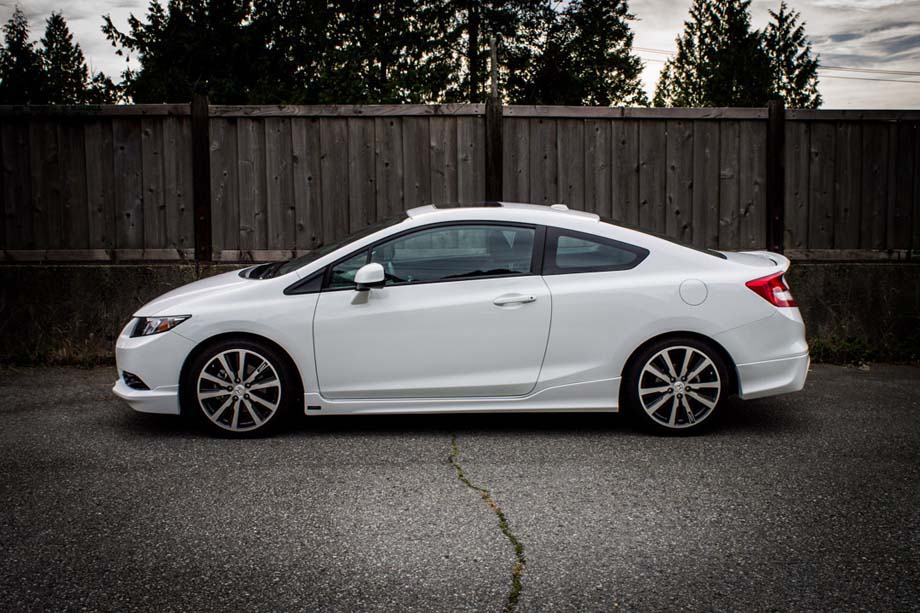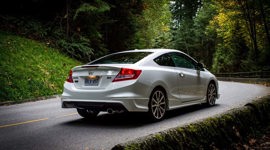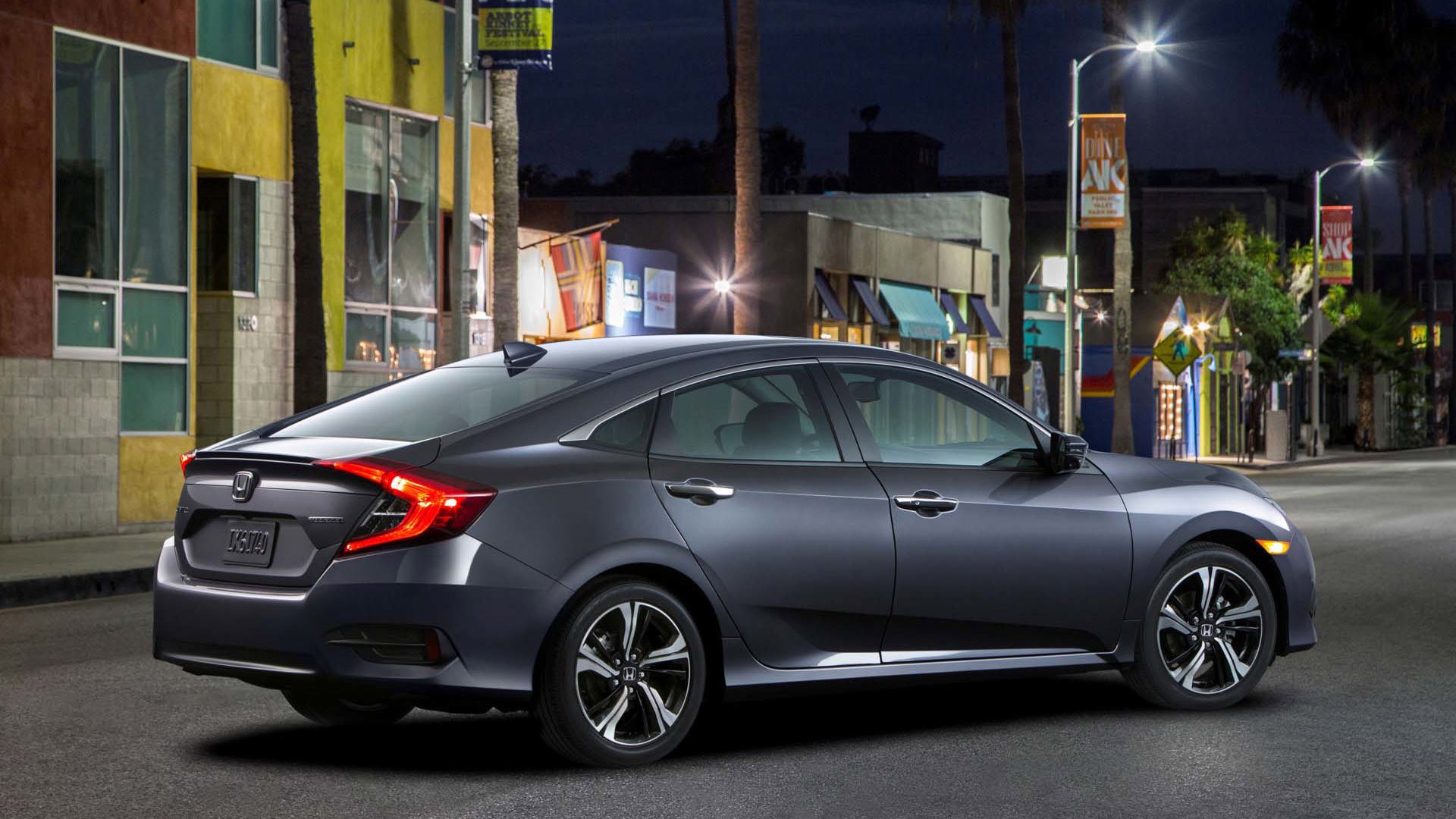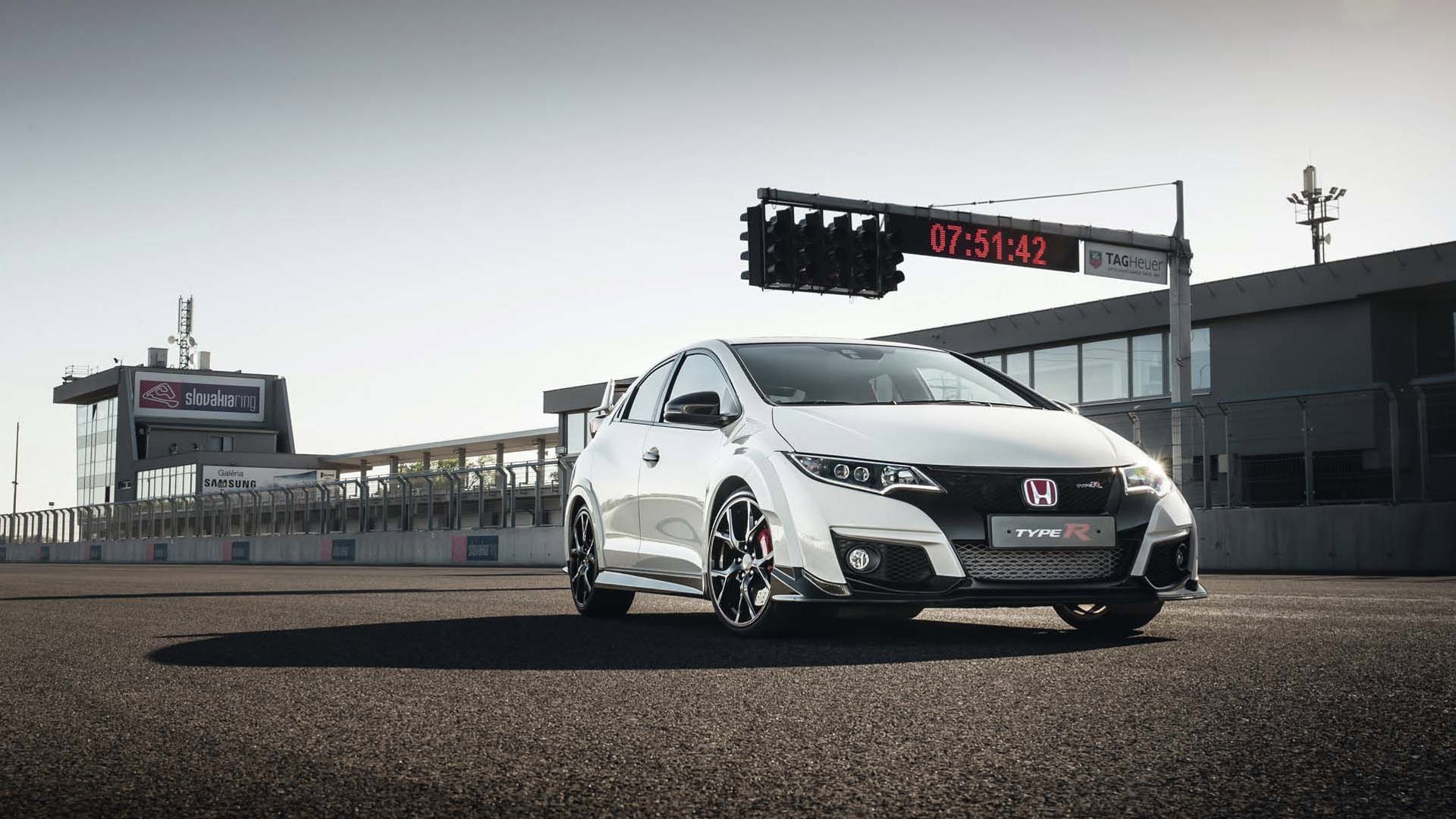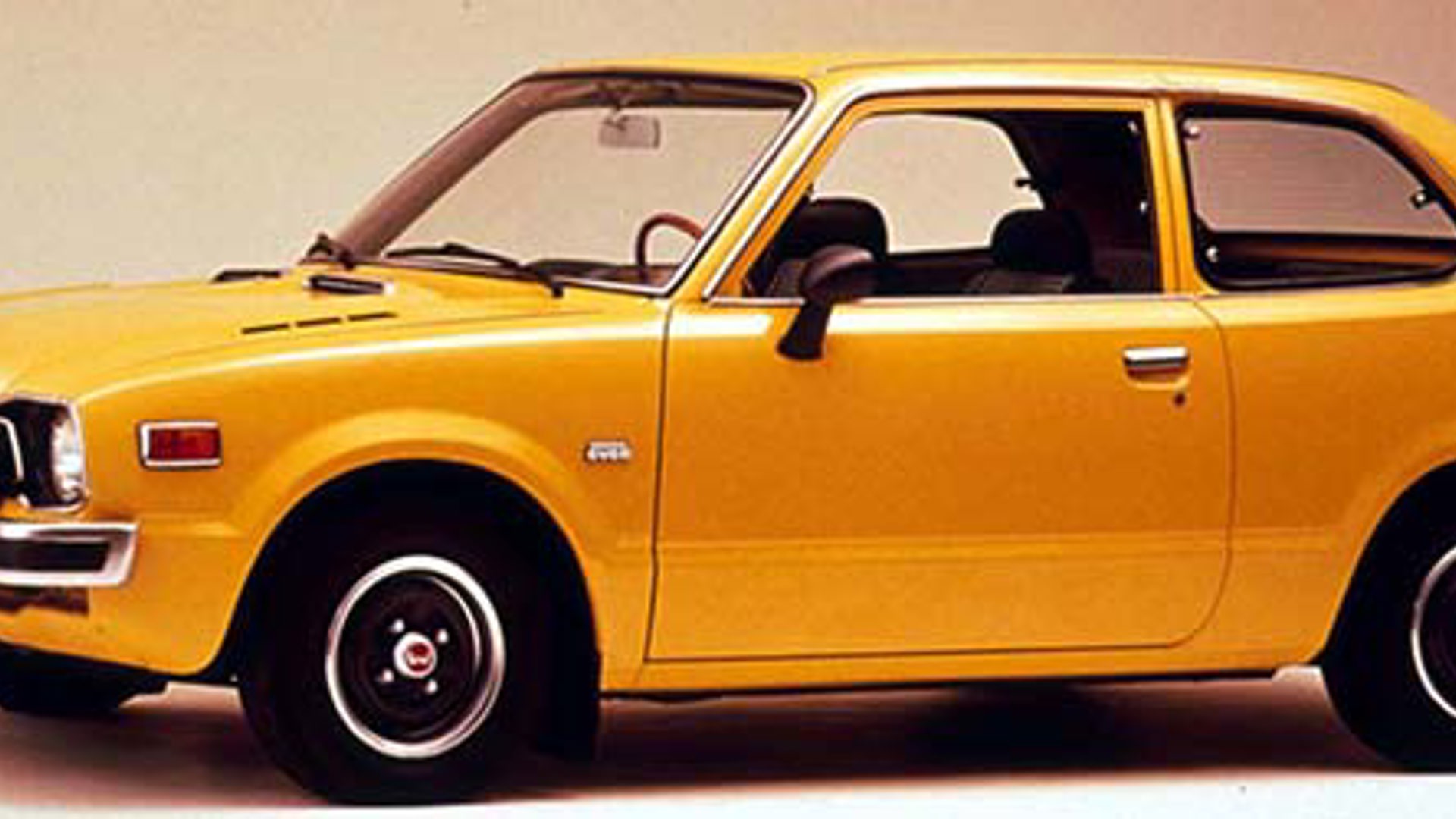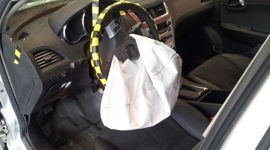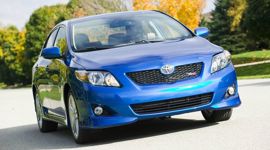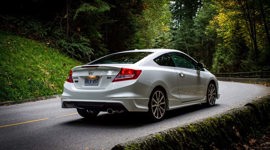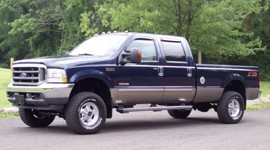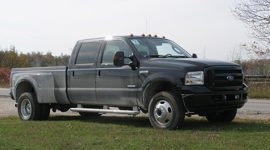When it comes to passenger car vehicle sales in Canada, I guess you could call it the Civic Authority. For nearly two decades, the humble Honda Civic has been the best-selling car in Canada. The Ford F-150 outdoes it, of course, but eliminate fleet sales and work trucks and the car that Canadians most turn to to get around has a Honda badge on the front of it.
Compare this to the United States, where Toyota reigns supreme. Or take a look at the European markets, where the Golf is the game of choice. Just what is it about the Honda Civic that we puck-chasing beaver-enthusiasts love so much?
Here's a look back at how the Civic came to our shores, and how it grew to become as much a Canadian favourite as the double-double, poutine and not paying attention to national politics.
First Generation: 1973–1979
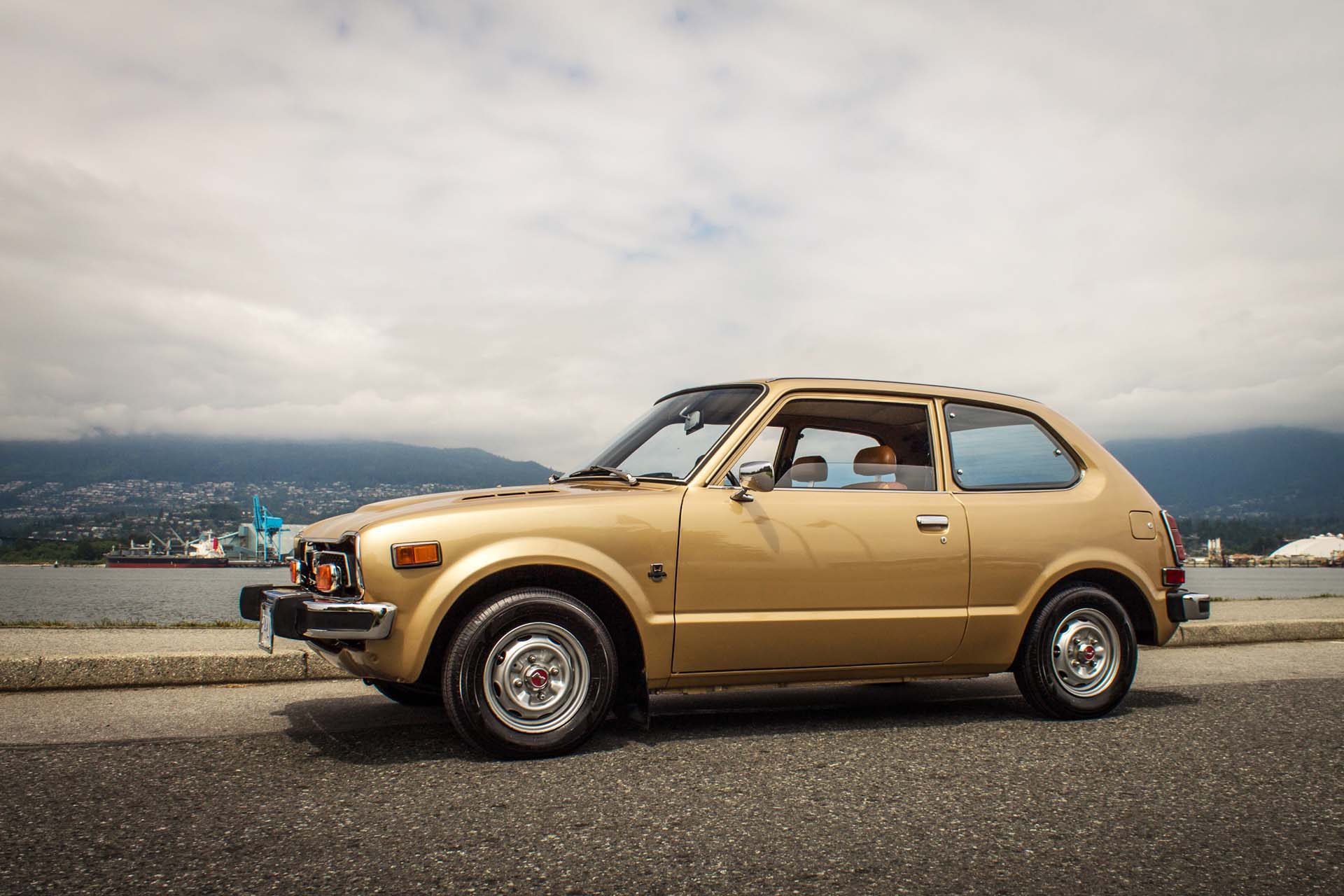 1977 Honda Civic
1977 Honda Civic
The first Civics arrived in Canada in 1973, simple, plain, and with limited options. They carried a transverse-mounted water-cooled engine making about 50 hp, were light and spacious, and were very inexpensive to buy. Compared to rear-wheel-drive economy cars like the Chevy Vega, the Civic was more of a Japanese interpretation of the Austin Mini.
Find of the Week: 1977 Honda Civic Hatchback
Timing couldn't have been better. The mid-1970s were a time of fuel-rationing and crises in the Middle East, so the big machines of the past were suddenly out of fashion. People wanted cars that would sip fuel but could still carry their family. The Civic fit the bill, and it was very reliable to boot. Sadly, rust issues plagued the little car, and very few survived.
Second Generation: 1979–1983
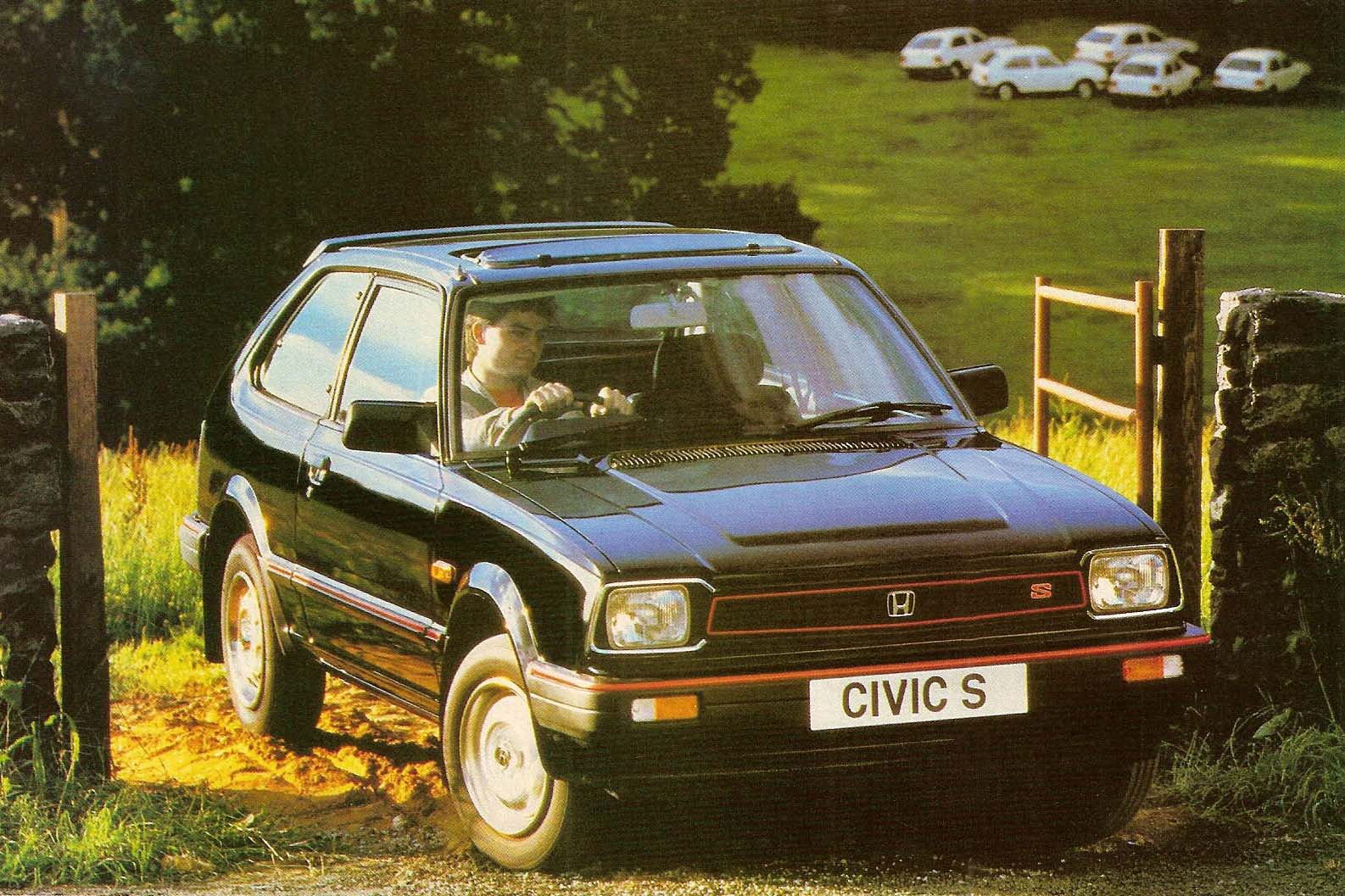 1983 Honda Civic 1500 S
1983 Honda Civic 1500 S
Like the original Mini, one of the side effects of having a small footprint and low curb weight is nimble handling. Standard Civics were plenty of fun to drive, and seeing how much people enjoyed the lightweight chuckability of the car, Honda moved to create more sporting versions.
The second generation Civic was a little larger and more substantial, but still very light by today's standards. While the platform would also give rise to the first Honda Preludes, the sportiest Civics got an “S” designation, which came with a little more power (69 hp), an upgraded suspension, and even a tachometer – the better with which to bounce the little 1500cc engine off the redline.
Third Generation: 1983–1987
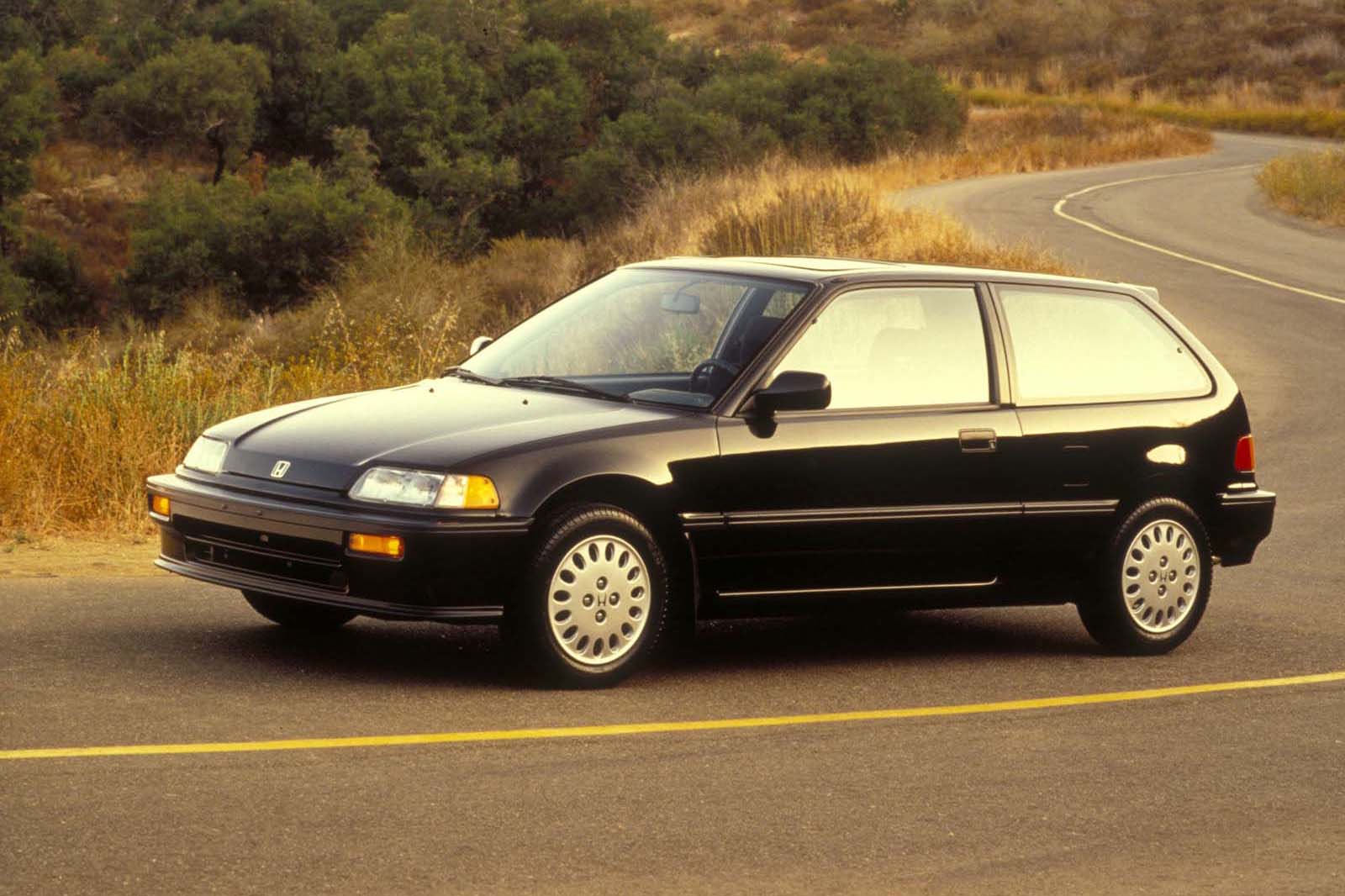 1986 Honda Civic Si
1986 Honda Civic Si
Now in its third generation, the Civic grew boxy and modern – for the 1980s – and was starting to get a little more respectable power levels. The Si, or Sport Injected, version managed to make 91 hp from a 1.5L fuel-injected engine.
With a curb weight of around 800 kg, the Civic made good use of its sub-100-hp engine, and stirring up the car with the five-speed manual was very good fun. Add in a useful hatchback body, and the Civic still managed to blend practicality with economical fun.
Fourth Generation: 1987–1991
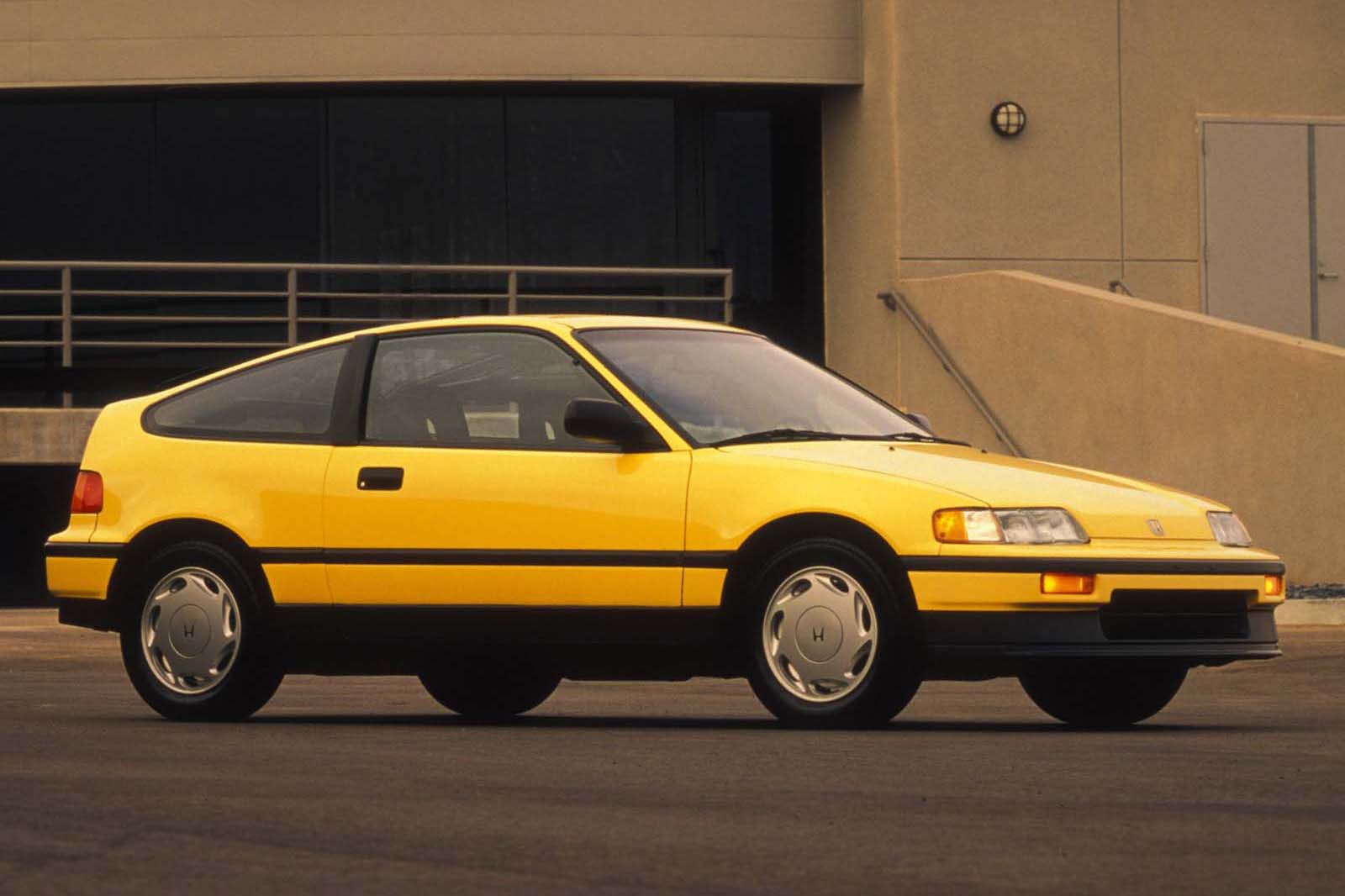 1987 Honda Civic CRX Si
1987 Honda Civic CRX Si
While first a hatchback, and later a sedan and wagon, perhaps no variant of the Civic is as beloved as the two-seater CRX. Even lighter than the standard machine, it retained practical hatchback sensibilities but added fun.
The Si model of the CRX had the same 91-hp 1.5L engine as the regular Civic, and that was plenty. HF versions prioritized fuel-sipping behaviour over all else, but still managed to be fun to chuck around. However, the Si version was where it was at.
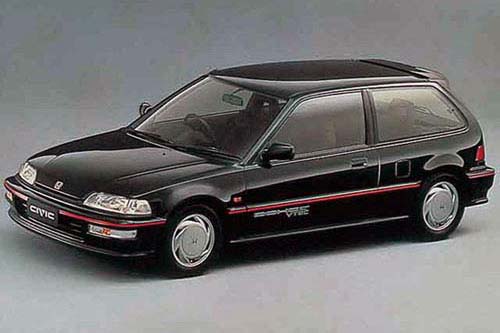 1989 Honda Civic SiR
1989 Honda Civic SiR
Canada wouldn't get a Civic badged “SiR” for years, but it's worth examining the Civic's overseas offering just to see the huge leap in technology this little car experienced in its fourth generation. Never mind making the most of limited horsepower, suddenly here's the legendary B16 1.6L screamer, capable of cranking out 158 hp at 7,600 rpm in the Japanese market.
Pretty impressive stuff, and when you add in double-wishbone suspension at all four corners and still-light curb weights, it's almost as if Honda was trying to build a car for future club racers. Unfortunately, Canadians mostly got a watered down Si with a 108-hp engine – and uniquely, we could get it with an automatic transmission. More practical, maybe not as much fun; we still bought scads of the things.
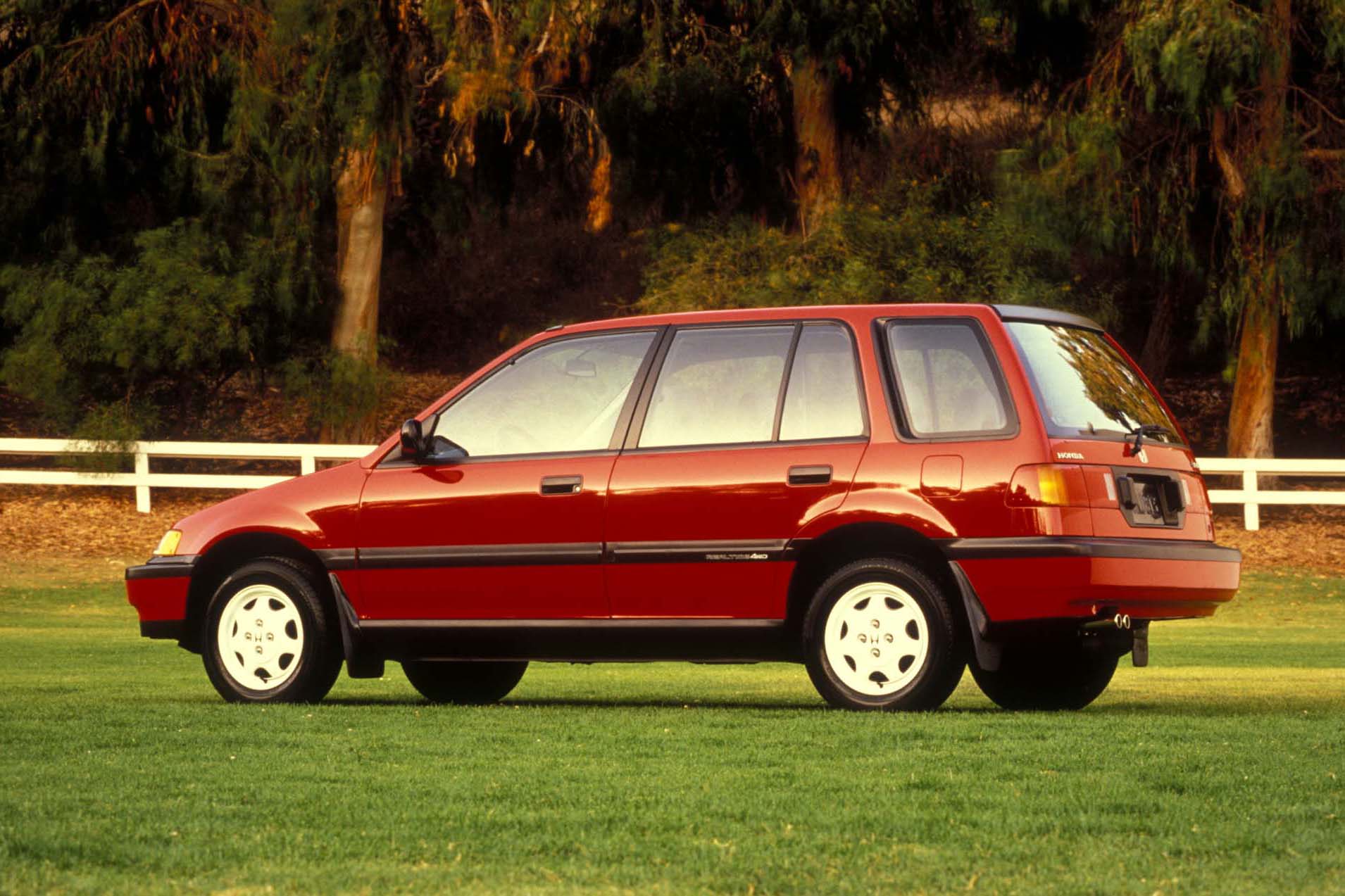 1989 Honda Civic Wagon
1989 Honda Civic Wagon
The fourth generation of Civic was also the last gasp for the popular Civic Wagon. Dubbed the Shuttle in overseas markets, it would continue on elsewhere, but Canada wouldn't see it continue into the next generations.
Pity that, as it was such a useful vehicle, a prelude to the Honda Element. Boxy and high-roofed, with available all-wheel drive and the same range of thrifty engines as other Civics, the Civic Wagon simply faded away as the SUV craze boomed.
Fifth Generation: 1991–1995
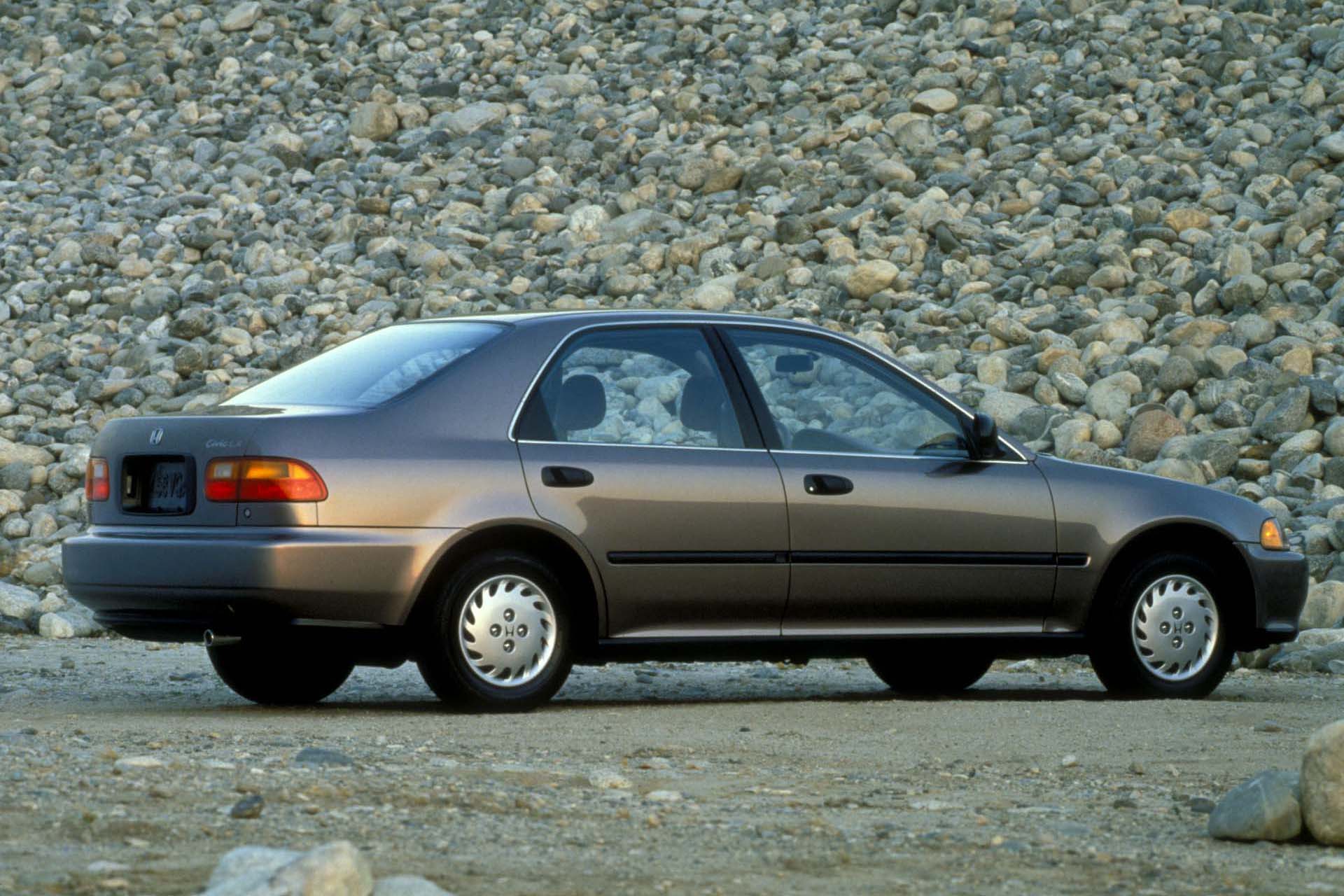 1992 Honda Civic LX Sedan
1992 Honda Civic LX Sedan
Interesting variants and sporting models aside, the Civic's bread-and-butter model remained the backbone of its sales portfolio. An economy-minded LX model, possessed of nothing fancier than automatic transmission and air conditioning, would likely survive decades of abuse, passing along from Mom and Dad's budget commuter to Junior's first car.
More aerodynamic now, the fourth-generation Civic remained long-lived and extremely economical to run. Power and torque weren't much to shout about, but both were up to the task and it was surprising just how much camping gear a humble little Civic could haul when called on.
Sixth Generation: 1995–2000
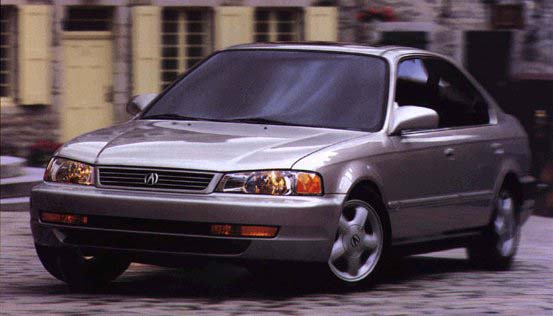 1997 Acura EL
1997 Acura EL
Canadians are cheap, but that doesn't mean we don't like a few niceties in our cars. Thus, the Canada-only Acura EL, a rebadged Honda Civic that never appeared in the US market, was offered with options you couldn't get on a humble Civic.
1997 also marked the year Honda's Alliston, Ontario plant built its millionth vehicle. Producing the Accord since 1986 and the Civic since 1988, Canada didn't just love Hondas, we built them, too.
Seventh Generation: 2001–2005
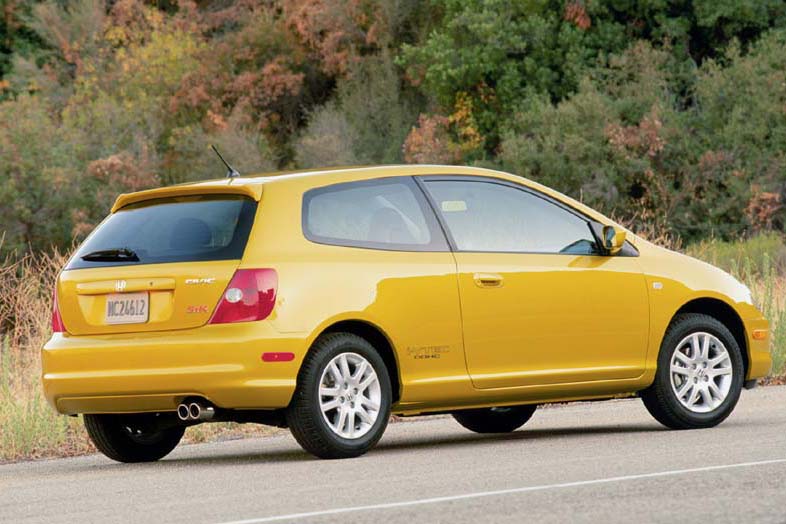 2002 Honda Civic SiR
2002 Honda Civic SiR
In 2002, Honda sold their millionth Civic in Canada – they even had a special commemorative edition to celebrate the fact. Sales of standard versions were strong, but something different was happening to the performance variants.
The hatchback SiR wasn't built in Japan or Canada, but in the UK, and things weren't great. Power was up just a little to 160 hp from a new 2.0L engine, and torque was significantly improved, but the double-wishbone suspension was gone, and with it that handling magic. Rigidity was up, but so too was weight. It was a foreshadowing of what was to come for the Civic's future.
Eighth Generation: 2006–2011
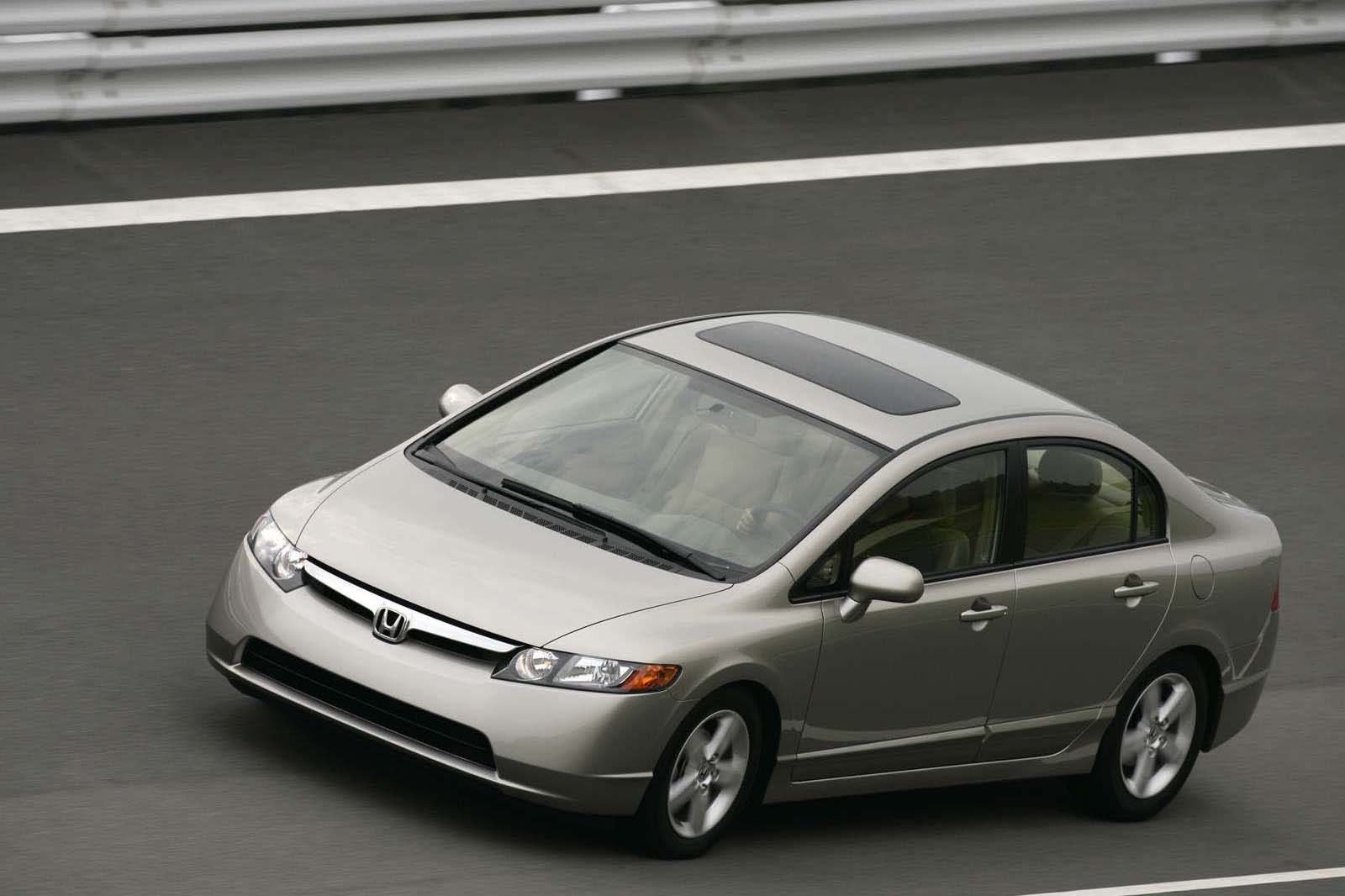 2006 Honda Civic EX
2006 Honda Civic EX
Representing a much bigger change than the incremental advances of past Civic evolution, the eighth-generation Civic was now even more aerodynamic than ever, with a sharply raked windshield and streamlined bodywork. Inside, a new two-tier dashboard sharply divided the critics, and while the Si was back with a much more potent 197-hp engine, the futuristic style of the main-line cars looked ready to puzzle the public.
It didn't matter, people still flocked to the Civic. EX versions were the top of the line, apart from sporting trims, and came with a power moonroof, disc brakes at all four corners, and even available navigation.
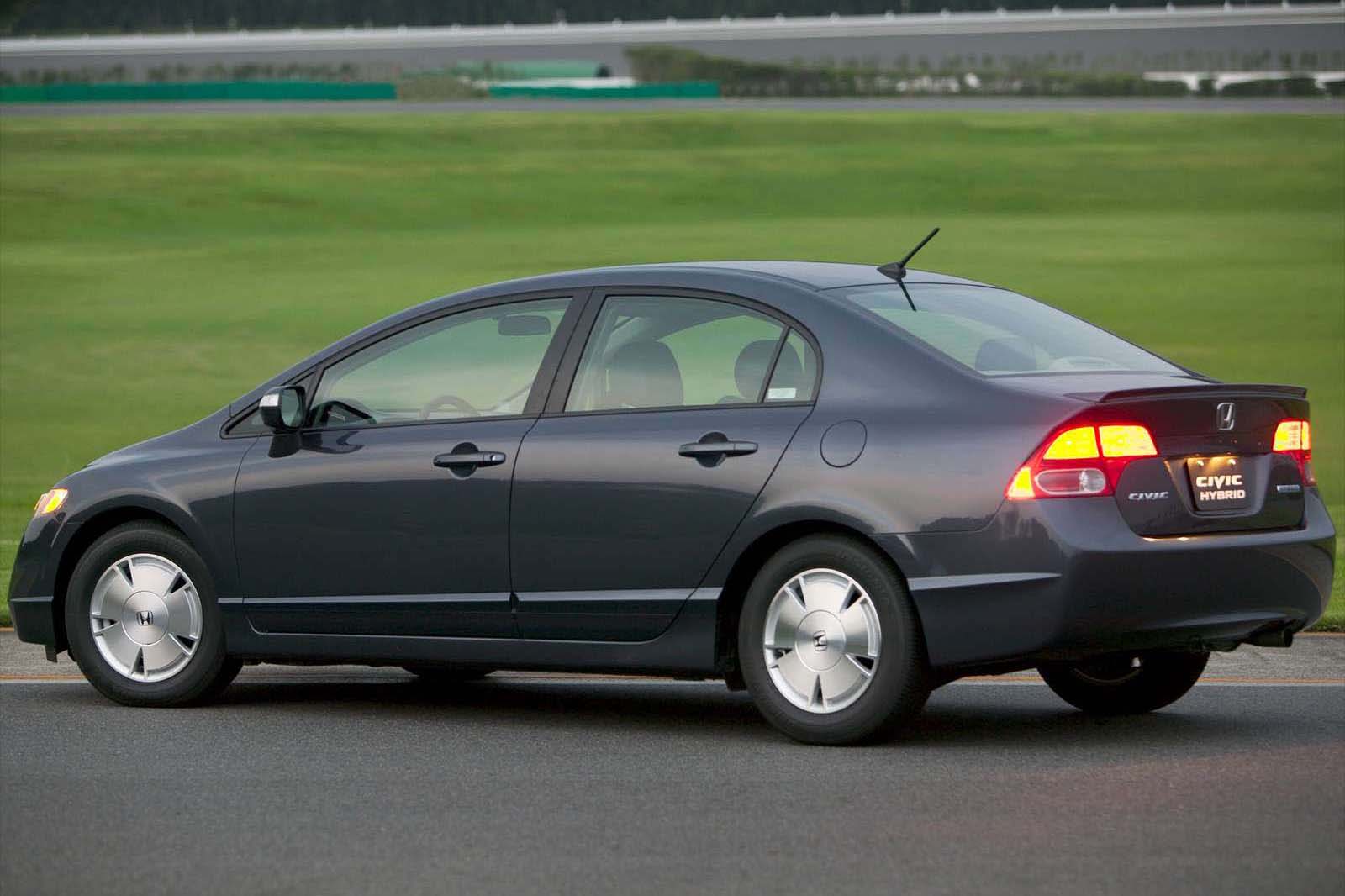 2006 Honda Civic Hybrid
2006 Honda Civic Hybrid
Looking to the Civic's future also meant a major update for powertrains, and not just the free-revving stuff. The second-generation of the Civic Hybrid looked to replicate some of the success of Toyota's Hybrid Synergy Drives, but with a milder hybrid application.
For the most part, the Civic Hybrid did its job. Fuel economy was even better than in the standard version, and for heavy urban use the car was practical. However, Honda struggled with battery issues and real-world fuel-economy figures that tended to turn buyers away from this more complicated machine. We liked our Civics simple.
Ninth Generation: 2012–2015
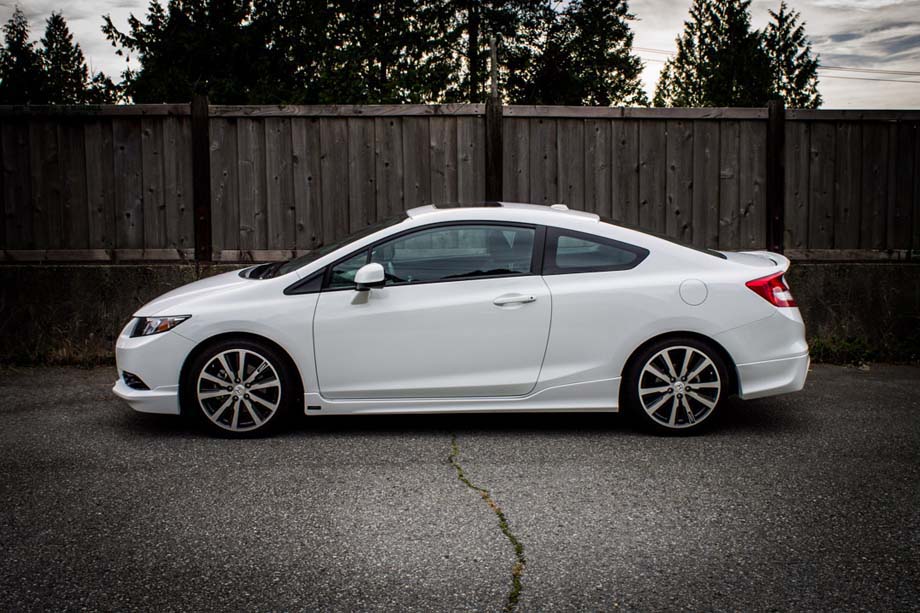 2013 Honda Civic Si HFP
2013 Honda Civic Si HFP
The Scion FR-S and the Subaru BRZ were heralded as a return to the rear-wheel-drive sportscar ideals of the past. Meanwhile, the ninth-generation Honda Civic was much larger than ever, and had a much simpler suspension setup than its low, light ancestors. Foregone conclusion, right?
Maybe not. The HFP-tuned Civic Si had the chops to go toe-to-toe with the new rear-drive upstarts, and when the weather got wet was maybe even quicker. So much for front-wheel-drive failure – when you've got this much grip, sometimes it doesn't matter what the armchair racers say.
Tenth Generation: 2016
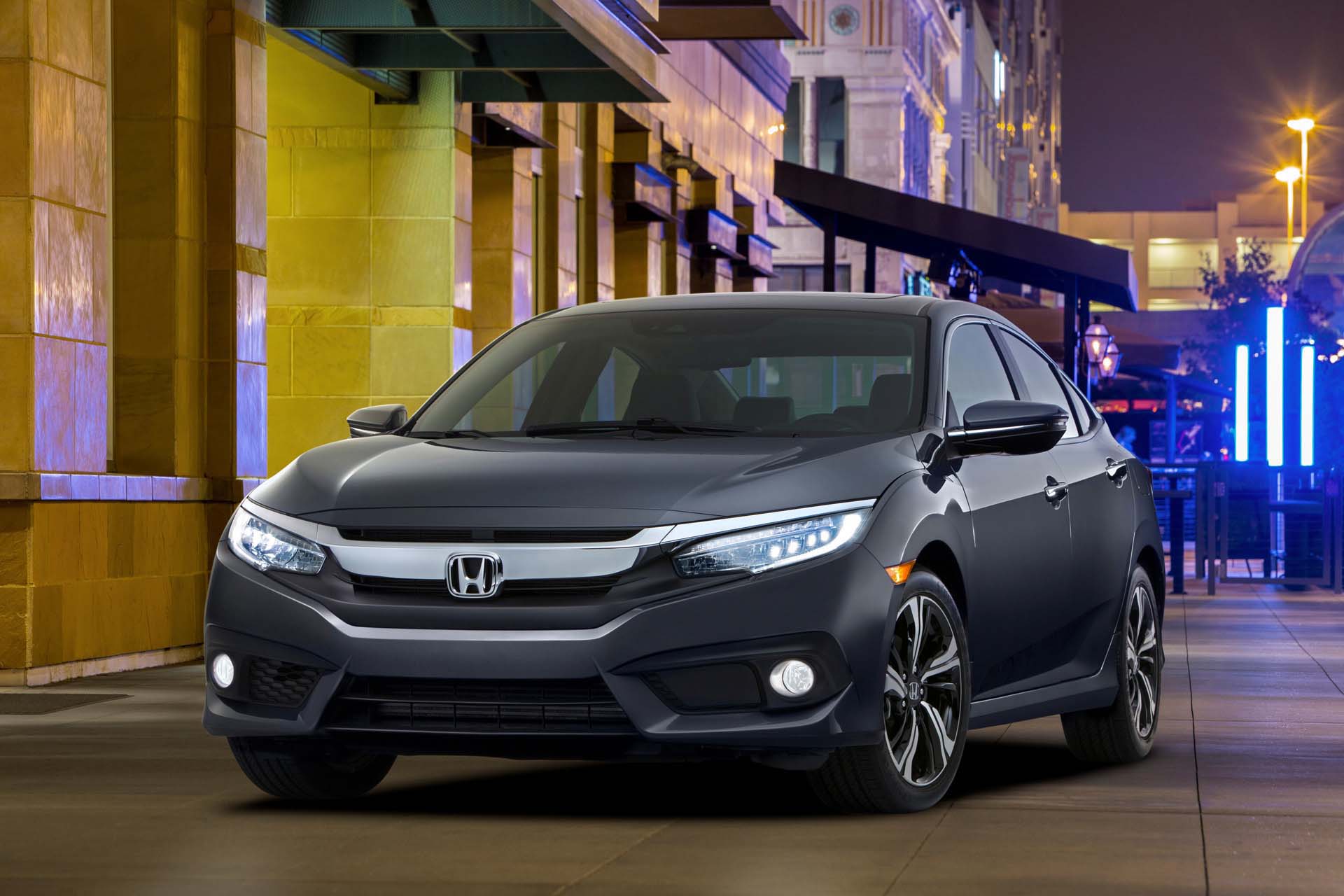 2016 Honda Civic Sedan
2016 Honda Civic Sedan
For the upcoming tenth-generation Civic, Honda's both gone back to basics and forward into the future. For instance, the interior layout is much more conventional than the outgoing car, but it also comes with a less-plasticky interior feel than before and Honda's new, higher-resolution infotainment system. It's more like a mini-Accord than ever.
Even bigger news is found under the hood, where turbocharging makes its first (officially sanctioned) appearance in a Civic. The 1.5L direct-injection turbo-four is a step up from a standard 2.0L engine, and at the top of the range, Canada finally gets the full-force Type-R.
That last seems like just reward for seventeen years of sales success, and while most Civics sold in this country will be less wild, it's nice to see we're finally getting the full range. Really, it's Honda's civic duty to hand us something extra special after all these years.
